1953
IT HAPPENED IN…1953
America continued to enjoy unprecedented
prosperity, although due to inflation a dollar in 1953 was worth
only 52¢ compared with its pre-World War II equivalent.
The Eisenhower administration successfully
negotiated a peace agreement ending the Korean War.
Dr. Jonas Salk of the University of Pittsburgh
reported the successful testing of a polio vaccine
Sir Edmund Hillary of New Zealand and Tensing
Norgay, a Sherpa from Nepal were the first climbers to reach the
summit of Mount Everest.
The Chevrolet Corvette, considered America’s
first sports car, rolled off the assembly line.
Country-and-western singer Hank Williams Sr. died
at age 29.
Pizza’s popularity increased with 15,000
pizzerias and food stores selling frozen and pre-made pizzas.
Network television show premieres included “The
Life of Riley,” “Romper Room,” and “General Electric Theater.
The television industry enjoyed enormous revenues primarily
generated by cigarette advertising.
The first color television sets went on sale.
TV Guide began
publication.
Hugh Hefner published the first issue of
Playboy magazine.
Marilyn Monroe was the first cover girl and nude centerfold.
Over 50,000 copies were sold at 50¢ each.
Newly introduced products and inventions included
WD-40, Swanson Frozen TV dinners, and Kellogg’s Sugar Smacks.
An upward trend in soft drink prices began.
Bottled beverages with synthetic sweeteners were
introduced for diabetic and special dietary uses.
Prominent brands included No-Cal, Diet-Rite, and Cott’s.
Cans were extensively promoted as containers for
carbonated soft drinks such as Can-A-Pop, Super-Coola, Shasta, and
Tap-A-Cola.
5,905 U.S. soft drink bottling plants were in
operation. Per capita
consumption was 177.5 bottles.
A company-owned bottling and syrup plant was opened
at a new location in Los Angeles, California in January, 1953.
These four young women were ice skating performers at
the 1953 Ice Capades. They
are posed taking a break to enjoy 26 ounce bottles of Hires Root Beer.
Two bottles have R-J logo labels, while one has a check mark
logo.
(Figure 1953-01, Press
Stroboscopic, Sid Albert Productions, Washington, D.C.)
Early in 1953 Hires partnered with their advertising agency, N. W. Ayer & Son, to develop and implement a new marketing thrust. Advertising changes included references to “Hires Real Oldtime Root Beer,” with old-fashioned images designed to arouse readers’ feelings of nostalgia, and the slogan “HIRES – THE ROOT BEER SINCE 1876.” The slogan change also promoted a major logo change by replacing the check mark with the words “Since 1876.” N. W. Ayer & Son represented religious weekly newspapers when founded in 1869 in Philadelphia. They expanded into all types of advertising in 1884 and ultimately billed themselves as America’s oldest advertising firm. Ayer’s best known slogans include “When it rains it pours” (Morton Salt), “I’d walk a mile for a Camel” (Camel cigarettes for R. J. Reynolds Tobacco), and “A diamond is forever” (DeBeers). Without any fanfare, Hires advertising implemented the “Since 1876” logo in the spring of 1953. Here are examples of three half page Hires advertisements created by N. W. Ayer & Son.
(Figure 1953-02, magazine
advertisement)
(Figure 1953-03, Life
and Saturday Evening Post)
(Figure 1953-04, Saturday
Evening Post)
(Figure 1953-04.3, 26 ounce
paper label, 3.5" x 4.0")
(Figure 1953-04.4, paper poster, 22.0" x 7.0"
(Figure 1953-04.5, paper poster, 22.0" x 7.0"
(Figure 1953-04.8, paper poster, 22.0" x 7.0"
The 1948 grilled cheese sandwich and Hires poster was updated with revised wording, stripes, and a fountain glass bearing the new logo, but the previous sandwich artwork was retained (see Figure 1948-09.1). The poster was assigned item number FR-9.
(Figure 1953-04.9, paper poster, 22.0" x 7.0"
Hires introduced a new, self-contained snack bar in the spring of 1953
via advertisements such as this trade publication listing.
Hires’ target market included operators and concessionaires at
drive-in theaters, recreation centers, bowling alleys, bus terminals,
railroad stations, department, variety and drug stores, supermarkets,
beaches, parks, and swimming pools.
(Figure 1953-05,
Motion Picture Herald)
Simultaneously, magazine advertisements introduced
the new Hires snack bar to the public.
(Figure 1953-06, magazine
advertisement, May, 1953)
The glass, electric wall sign introduced in 1952 (see Figure 1952-13) was updated with the new "Since 1876" logo. A sticker on the back indicates this sign was manufactured for Hires by the Advertising Products Company, Cincinnati 23, Ohio.
(Figure 1953-06.5, convex
glass, electric wall sign, 16.5” diameter)
This 8.0" x 11.5" advertisement ran in The Minneapolis Star newspaper during a two week special promotion featuring 26 ounce bottles of Hires Root Beer for only 5¢ when customers also purchased a six bottle carton at the regular price.
(Figure 1953-06.8, The
Minneapolis Star newspaper, June 18, 1953)
Clearly pleased with their role in developing a national advertising
program “helping a new generation share the pleasure of Hires,” N. W.
Ayer & Son, Inc. placed the following advertisement in
Western Advertising magazine.
(Figure
1953-07, Western
Advertising, July, 1953)
(Figure
1953-07.5, letterhead)
(Figure
1953-07.5, legal-size envelope)
Numerous mistakes were made during the process of implementing the “Since 1876” logo, e.g. this crown cap produced for the Buckler Beverage Company in Flint, Michigan, a Hires franchisee, has a simple “1876” logo, rather than “Since 1876.”
(Figure 1953-08, Hires crown cap with “1876” logo)
This crown cap proof also bears only an "1876" logo. Proofs were delivered to bottlers for their approval prior to production, and also used as samples for prospective customers. This example was made by Crown Cork and Seal. The back is blank.
(Figure 1953-08.5, Hires crown cap proof with “1876” logo)
The logos printed on the top and bottom flaps of this carton of Hires Home Recipe Root Beer Extract are marked “1876” rather than “Since 1876,” and “WITH ROOTS-BARKS-HERBS” has been replaced by “FOR USE WITH YEAST.”
(Figure 1953-09, Hires Home Recipe carton front, side, and top)
Hires’ 1953
Fountain Syrup and Dispensing Equipment catalog shows in detail the
wide variety of equipment and advertising materials made available to
fountain operators. A
double-sided Retail Price List insert was effective September 1, 1953.
(Figure 1953-10, Fountain Syrup and Dispensing Equipment catalog, front cover)
(Figure 1953-10, Fountain Syrup and Dispensing Equipment catalog, inside front cover)
(Figure 1953-10, Fountain Syrup and Dispensing Equipment catalog, page 1)
(Figure 1953-10, Fountain Syrup and Dispensing Equipment catalog, page 2)
(Figure 1953-10, Fountain Syrup and Dispensing Equipment catalog, page 3)
(Figure 1953-10, Fountain Syrup and Dispensing Equipment catalog, page 4)
(Figure 1953-10, Fountain Syrup and Dispensing Equipment catalog, page 5)
(Figure 1953-10, Fountain Syrup and Dispensing Equipment catalog, page 6)
(Figure 1953-10, Fountain Syrup and Dispensing Equipment catalog, page 7)
(Figure 1953-10, Fountain Syrup and Dispensing Equipment catalog, page 8)
(Figure 1953-10, Fountain Syrup and Dispensing Equipment catalog, inside back cover)
(Figure 1953-10, Fountain Syrup and Dispensing Equipment catalog, back cover)
(Figure 1953-10, Retail Price List, front)
(Figure 1953-10, Retail Price List, back)
This Model 42A Hires Multiplex Electric Refrigerated counter-type
dispenser may have been ordered from the illustrated 1953
Fountain Syrup and Dispensing
Equipment catalog. This
is the more expensive version with a stainless steel shell.
(Figure 1953-11, Model 42A
Hires Multiplex dispenser)
John R. Minten, Hires’ Advertising Manager, penned the following article
about advertising signs for the October, 1953 issue of
The American Bottler.
His comments provide insight into Hires’ long-standing approach
to the use and placement of signs.
Of critical importance was choice of location timed in direct
relation to motivating a potential customer to take action.
Minten stated “When you’re thirsty you need no reference book on
what to do. The only
problem is to select the thirst quencher you prefer.
Note the word prefer; it’s important to every bottler.
Once a customer decides what soft drink he wants, second choices
or ‘just as goods’ never satisfy…Hires…spends a substantial part of its
advertising budget for a great variety of signs designed to sway
preferences at the crucial moment when they are established.
Signs set up the impulsive action that results in sales.”
The article closed with a checklist on “where and where not to
place signs.”
(Figure
1953-12, The
American Bottler, October, 1953)
This sign combines the “REAL OLDTIME” and “For PLEASURE and THIRST”
slogans both in words and via the illustrations.
Note the old-fashioned silhouette positioned to appear to be the
attractive woman’s shadow.
(Figure 1953-13, tin over
cardboard sign, 12.0” x 18.0”)
This sign has an easel back for counter or shelf
display, plus holes for use as a wall hanger.
In addition to stating “REAL OLDTIME” and “SINCE 1876,” note how
the old-fashioned background to the Hires logo gives the sign a
nostalgic feel.
(Figure 1953-14, tin over
cardboard counter, shelf, or wall sign, 7.0” x 10.0”)
This heavy glass ashtray doesn't bear any manufacturing information. The red ACL was applied to the base. It measures 4.25" x 4.25" x 1.0".
(Figure 1953-14.5, glass
ashtray, top view)
(Figure 1953-14.5, glass
ashtray, side view)
The cardboard drive-in signs were updated with the
“Since 1876” logo and “Real Oldtime” slogan.
(Figure 1953-15, cardboard
drive-in sign, 6.5” x 3.5”)
Instead of utilizing the stock drive-in signs supplied by Hires, some owners had their own unique signs printed, such as this example produced for Manners Big Boy, headquartered in Cleveland, Ohio.
(Figure 1953-15.5, cardboard
drive-in sign, 7.25” x 5.25”)
These two eye-catching window or back bar display
signs are pictured inside the back cover of Hires’ 1953
Fountain Syrup and Dispensing
Equipment catalog.
(Figure 1953-16, paper sign,
7.0” x 22.0”, item FR-4)
(Figure 1953-17, paper sign,
7.0” x 22.0”, item FR-13)
(Figure 1953-17.5, cardboard sign,
11.0” x 14.0”, item FR-2FC)
(Figure 1953-18, cardboard bottle topper)
(Figure 1953-18.5, cardboard bottle topper, 7.125" x 6.5")
(Figure 1953-19, aluminum
sign, 26.75” x 20.5”)
The Charles E. Hires Company was highlighted in Famous Philadelphia Firsts, an eight page, 9.0" x 6.0" tourism booklet published circa 1953.
(Figure 1953-19.5, Famous
Philadelphia Firsts, front cover)
Unfortunately, the booklet copywriters didn't do their homework, simply repeating several myths concerning Hires' historical development. Here is the Hires entry in the booklet's listings of "Philadelphia Firsts:"
(Figure 1953-19.5, Famous
Philadelphia Firsts, page 3)
(Figure 1953-19.5, Famous
Philadelphia Firsts, back cover)
This embossed, metal sign was manufactured by the Press Sign Company of St. Louis, Missouri and assigned item number BN-12.
(Figure 1952-20, embossed
metal sign, 56.0” x 18.0”)
This Press Sign Company produced sign appears to be identical to the previous example until noticing the words “ROOT BEER” have been added, “For PLEASURE and THIRST is in black, rather than black-and-white, and the “splash” behind the lettering and bottle image makes the entire sign come to life. It was also assigned item number BN-12.
(Figure 1953-21, embossed
metal sign, 56.0” x 18.0”)
The Press Sign Company also produced this ten foot tall sign and shipped it to the Miller Bottling Company, 124 N. Hart Street, Marietta, Ohio. The back was braced with wood to help maintain the shape and to facilitate hanging for display at the bottling plant. The sign was assigned item number BN-15.
(Figure 1953-21.5, tin sign,
10.0' tall, front and back)
Hires wrapped up 1953 with one-third page advertisements in
The American Bottler.
A “Smooth Sailing” posting in November reminded bottlers Hires’
national advertising program included placements in
Life,
Look, and
Saturday Evening Post
magazines and “a few franchises remain available.”
December’s posting announced that “In a nationwide independent
research study” the illustrated Hires to You! advertisement was “one of
the two best-read soft drink advertisements of 1952…(and) Looking ahead,
Hires high-rating ads seem likely to keep on piling up points, and
profits. With more and more
national advertising scheduled to blanket franchise territories
everywhere, business looks mighty good for Hires bottlers coast to
coast.”
(Figure 1953-22, The American Bottler, November, 1953)
(Figure 1953-23, The American Bottler, December, 1953)

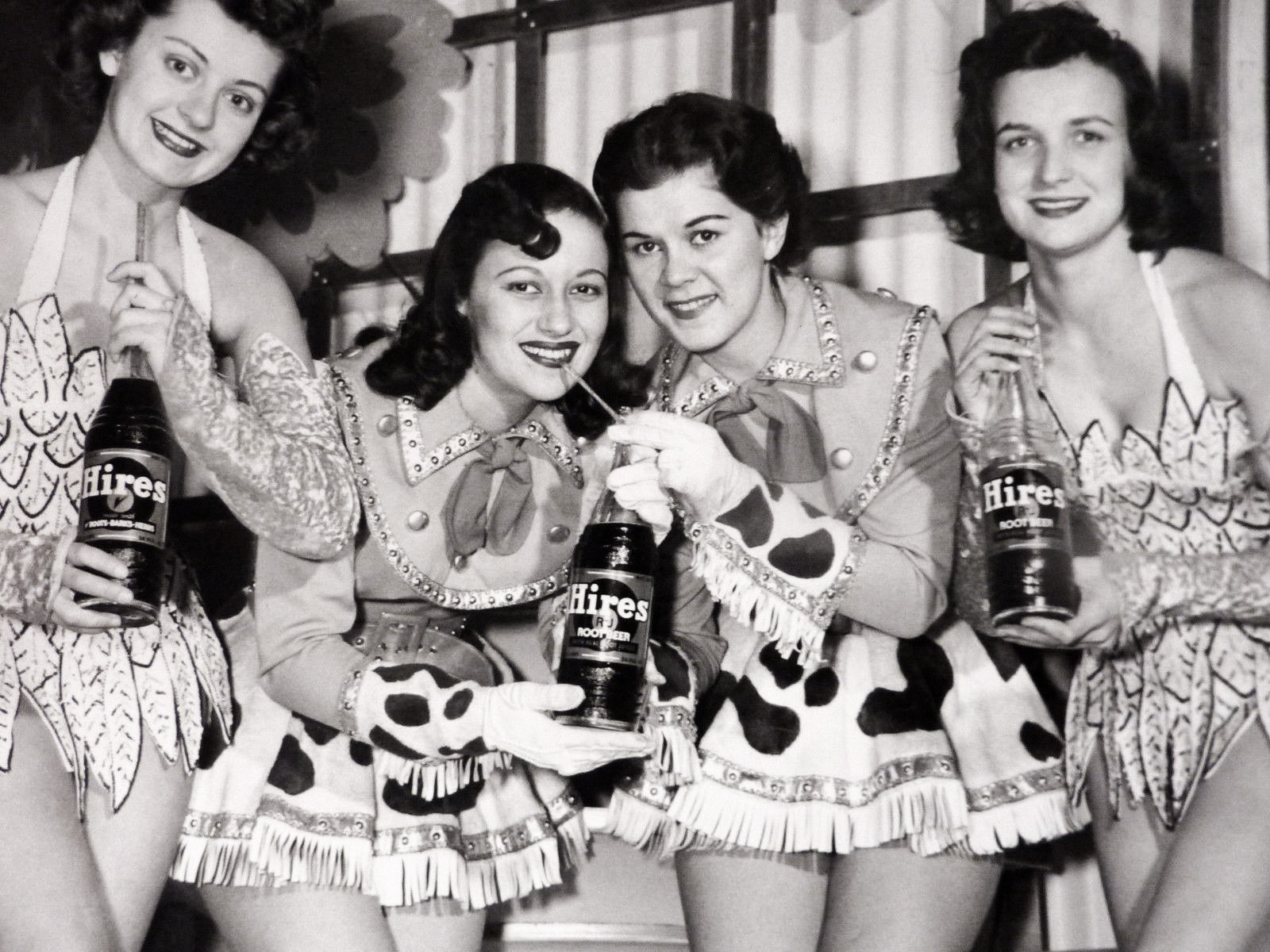
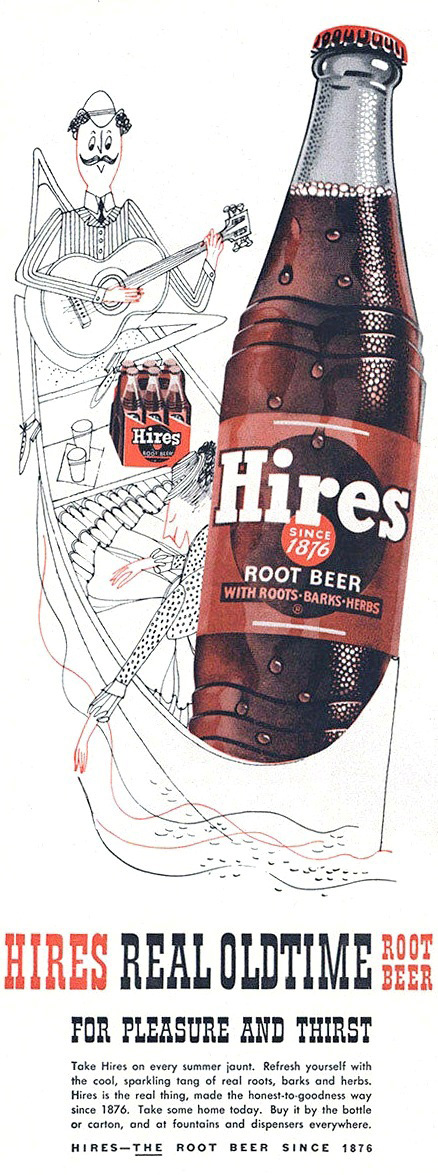
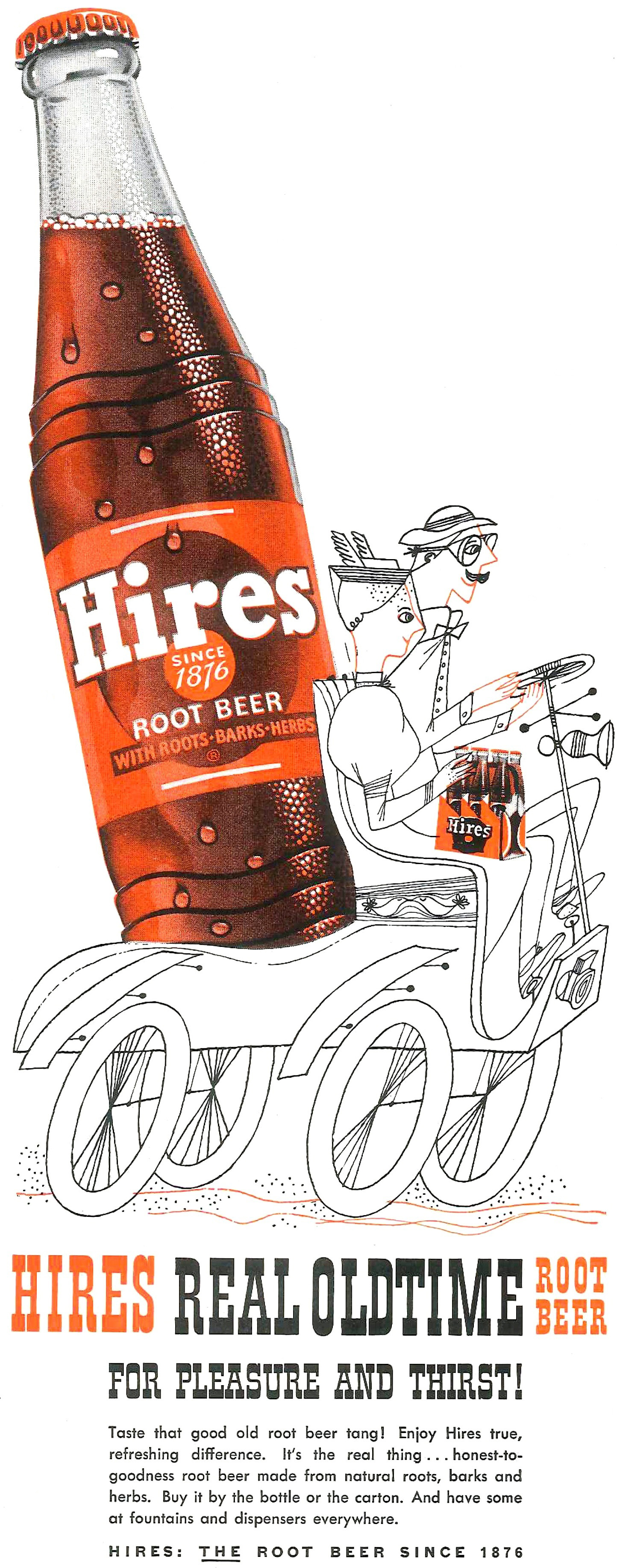
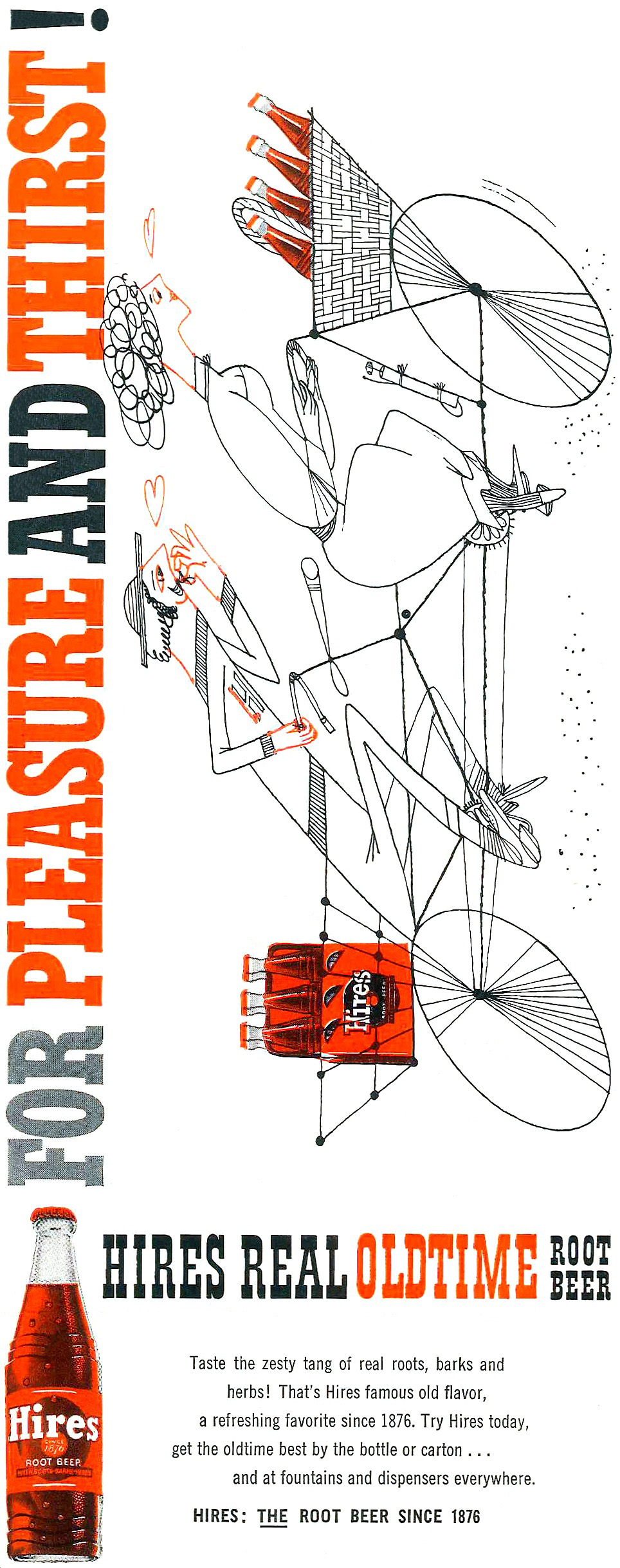
%20Root%20Beer%20With%20Roots-Barks-Herbs%20-%2026%20ounce%20paper%20label%20-%203.5%20x%204.0.jpg)




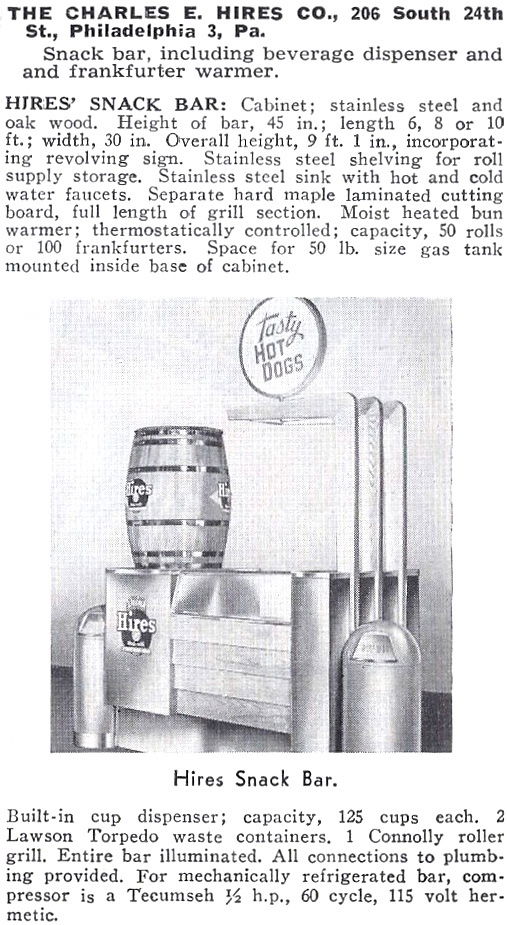
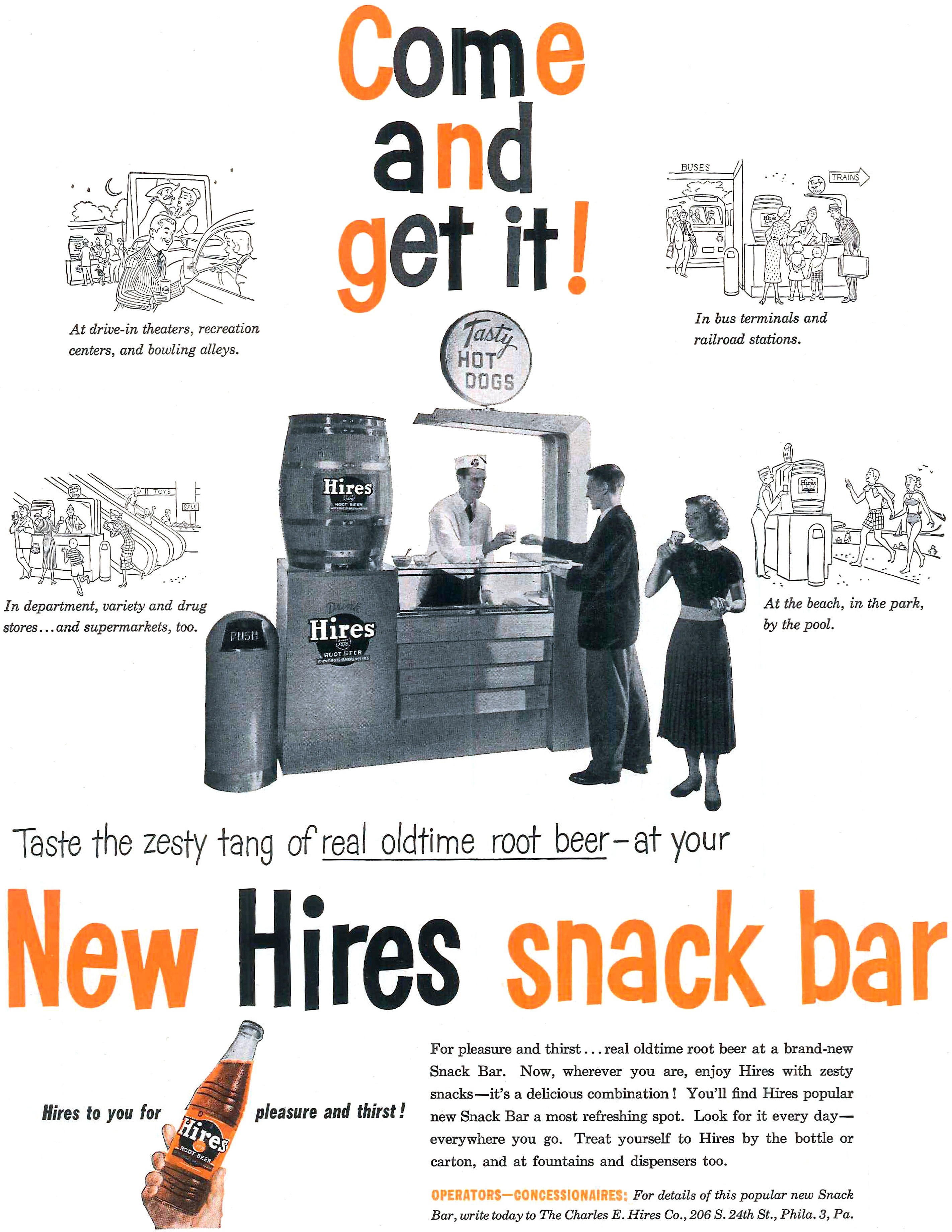
%20Root%20Beer%20With%20Roots-Barks-Herbs%20-%20convex%20glass%20electric%20wall%20sign.jpg)
%20ROOT%20BEER%20SPECIAL%20-%20The%20Minneapolis%20Star%20newspaper,%20June%2018,%201953.jpg)
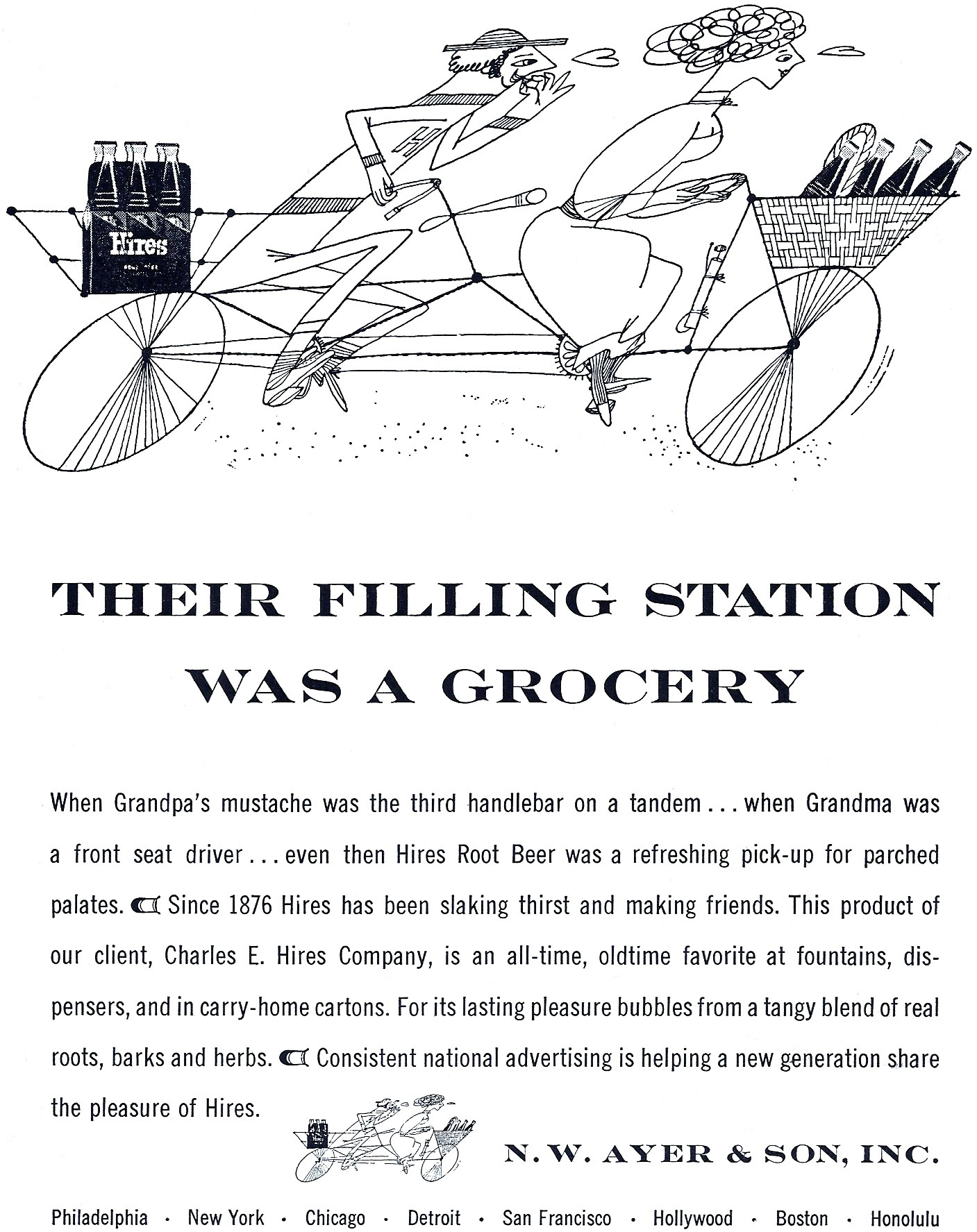
%20Root%20Beer%20With%20Roots-Barks-Herbs%20(no%20Since)%20-%20Letterhead.jpg)
%20Root%20Beer%20With%20Roots-Barks-Herbs%20(no%20Since)%20-%20legal-sized%20envelope.jpg)
%20Root%20Beer%20With%20Roots-Barks-Herbs%20(no%20Since)%20-%20crown%20cap%20from%20Flint,%20MI.jpg)
%20Root%20Beer%20With%20Roots-Barks-Herbs%20crown%20cap%20proof.jpg)
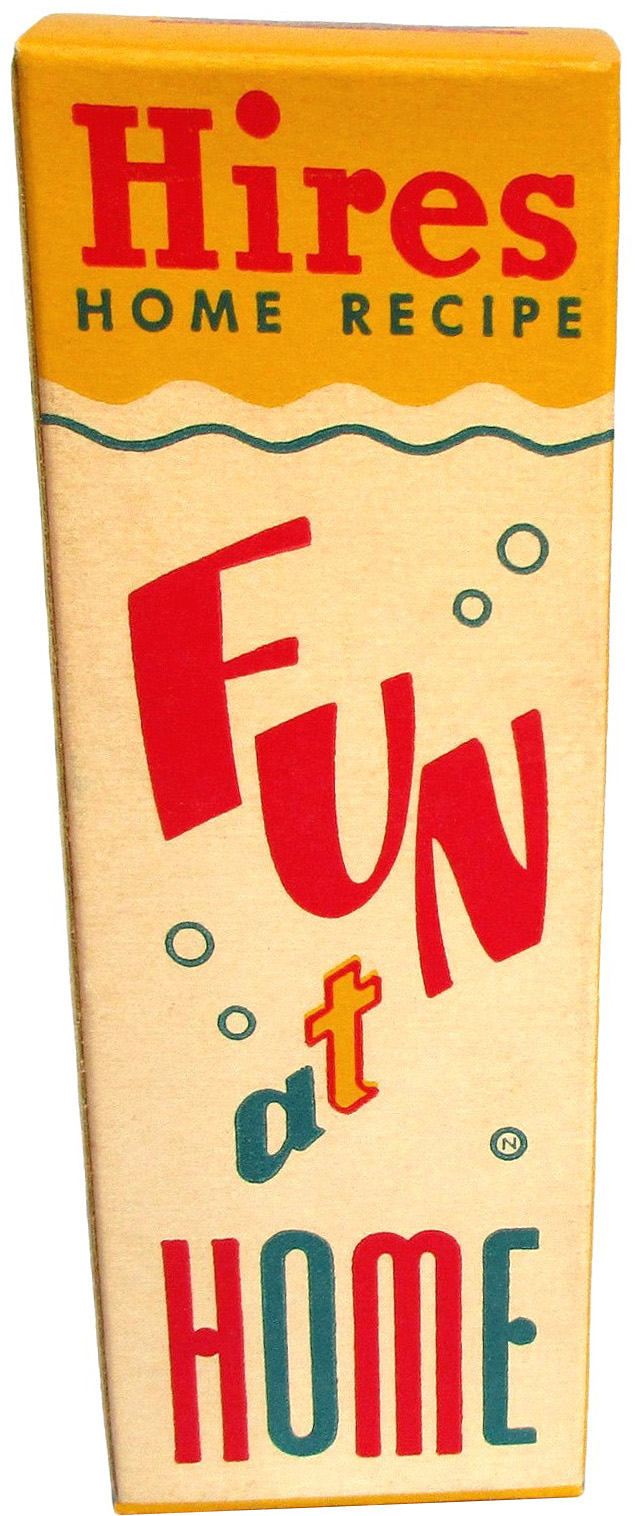
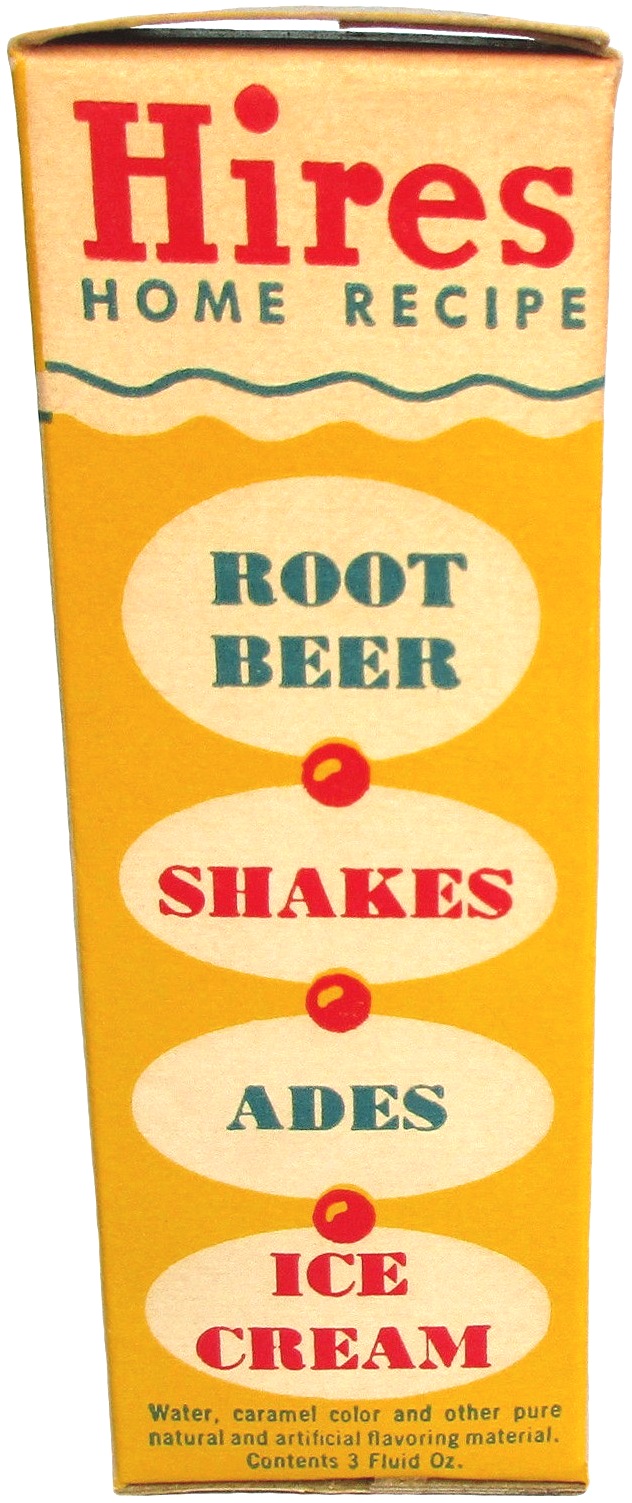
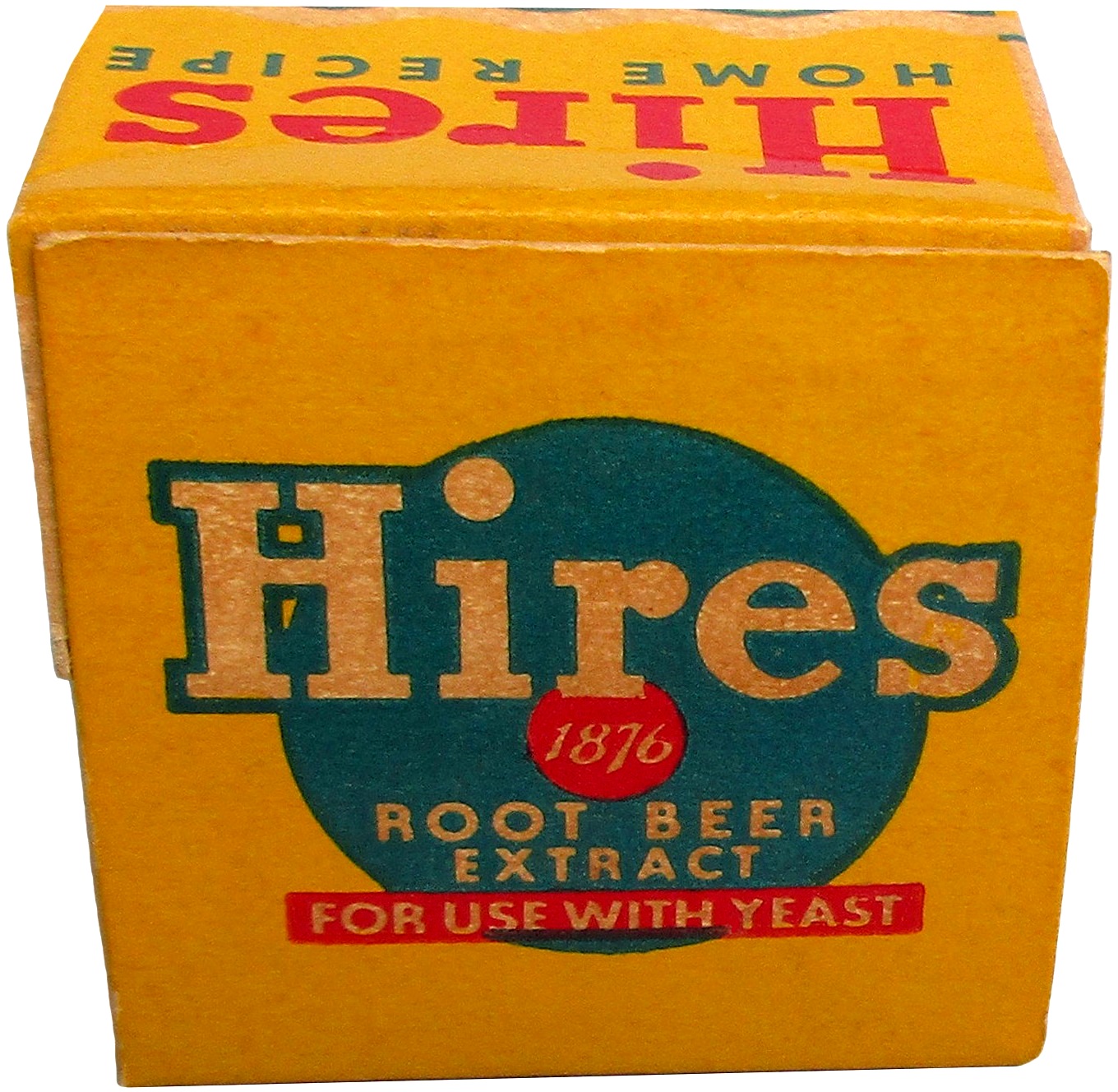


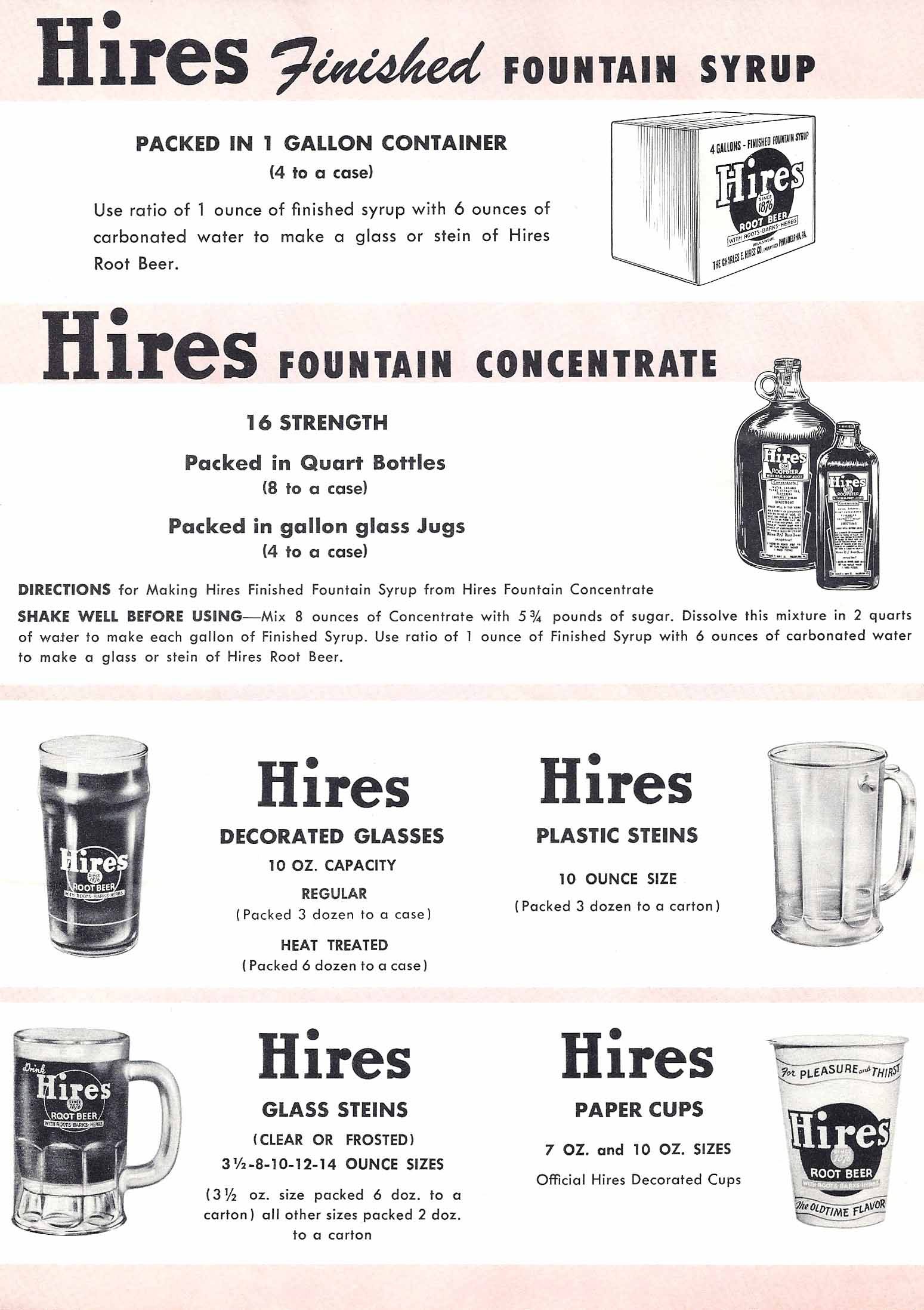
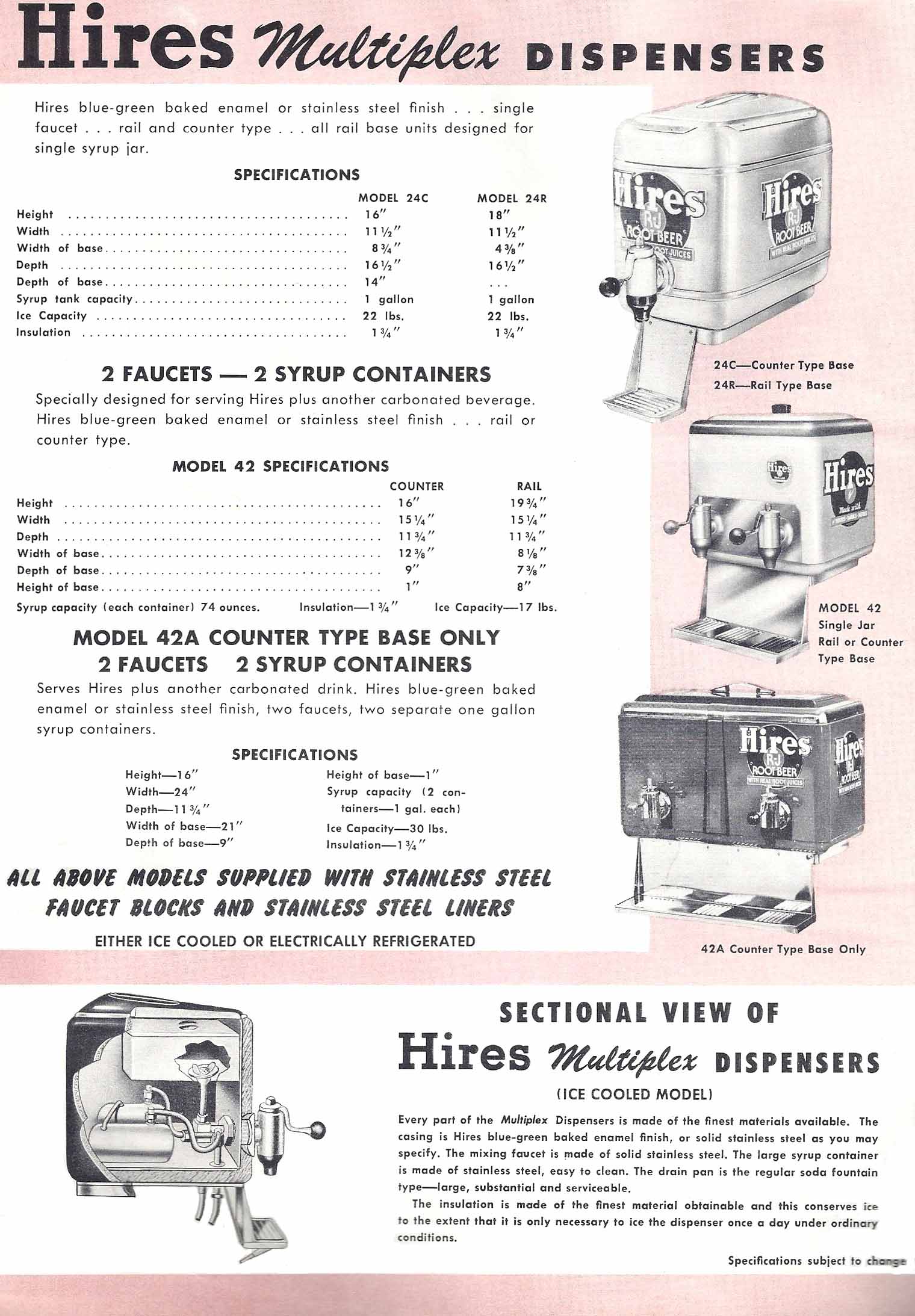
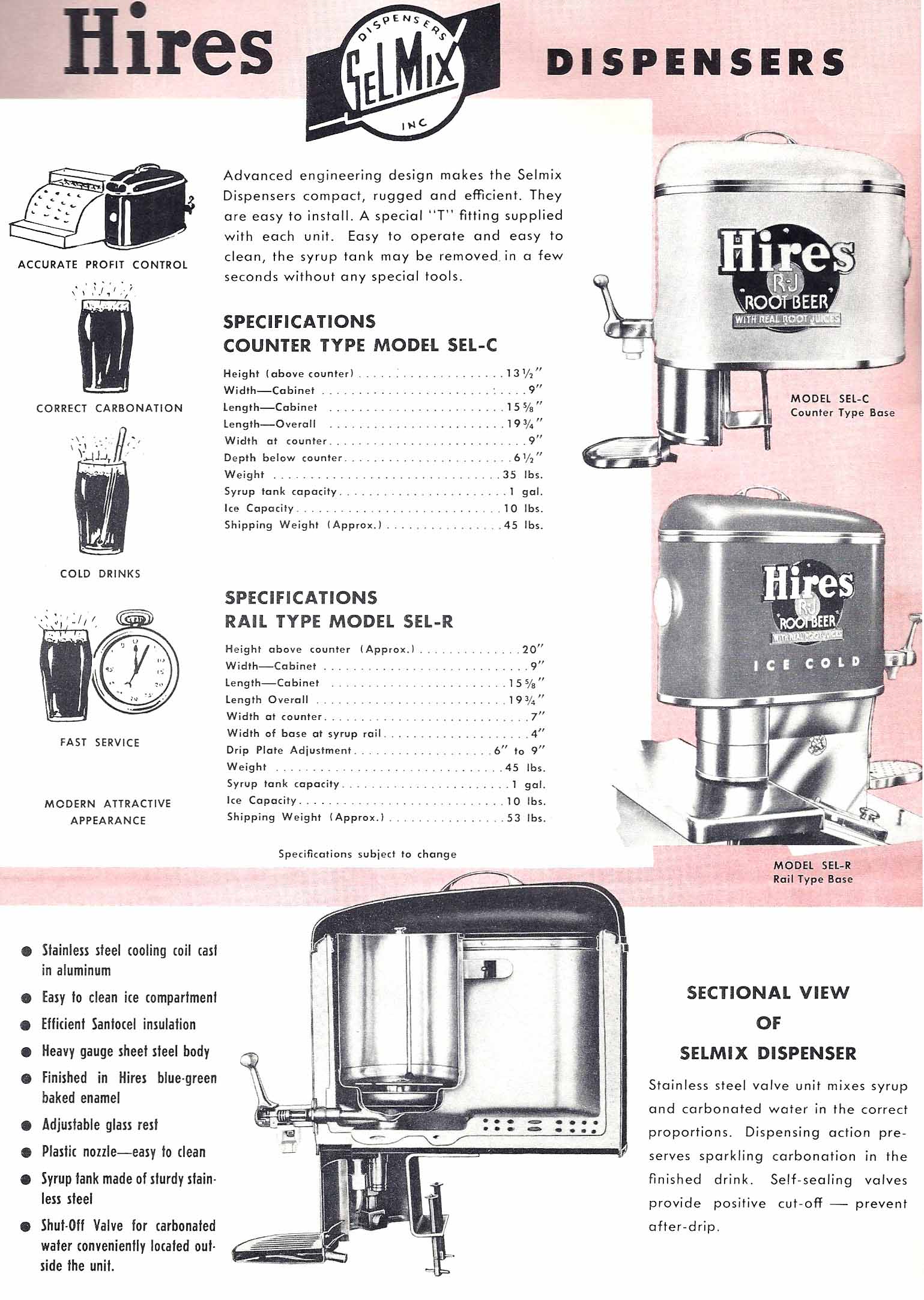
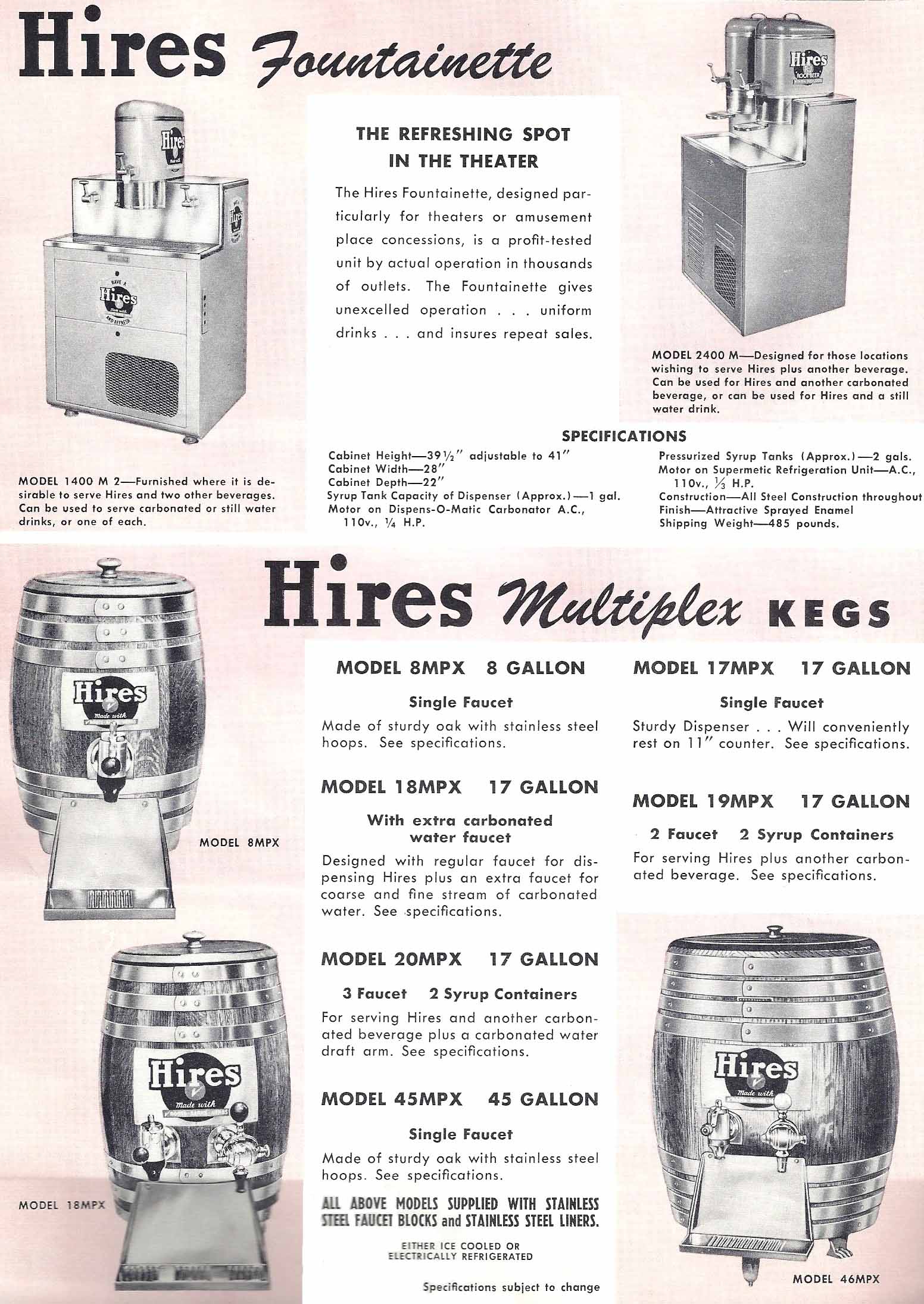
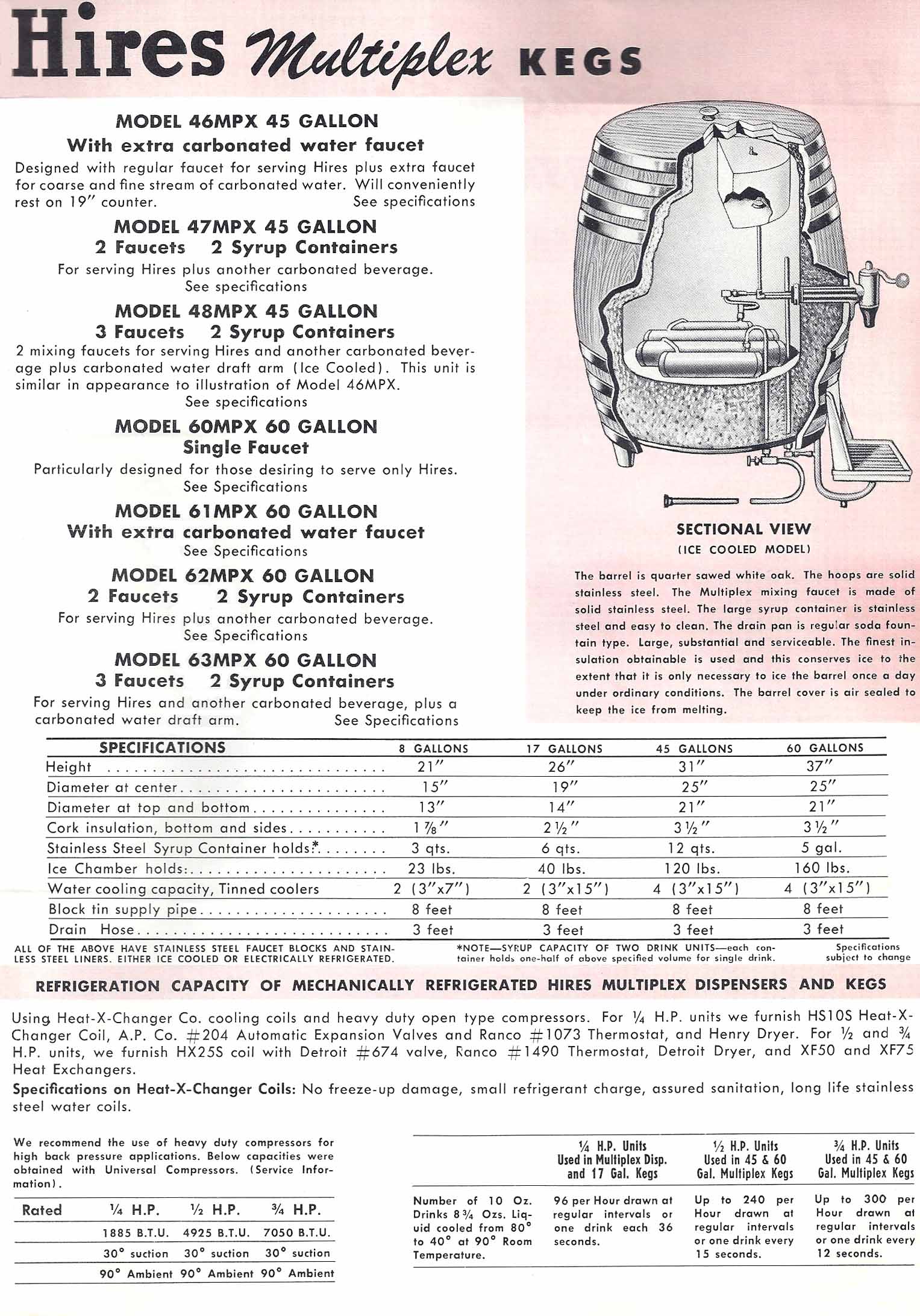
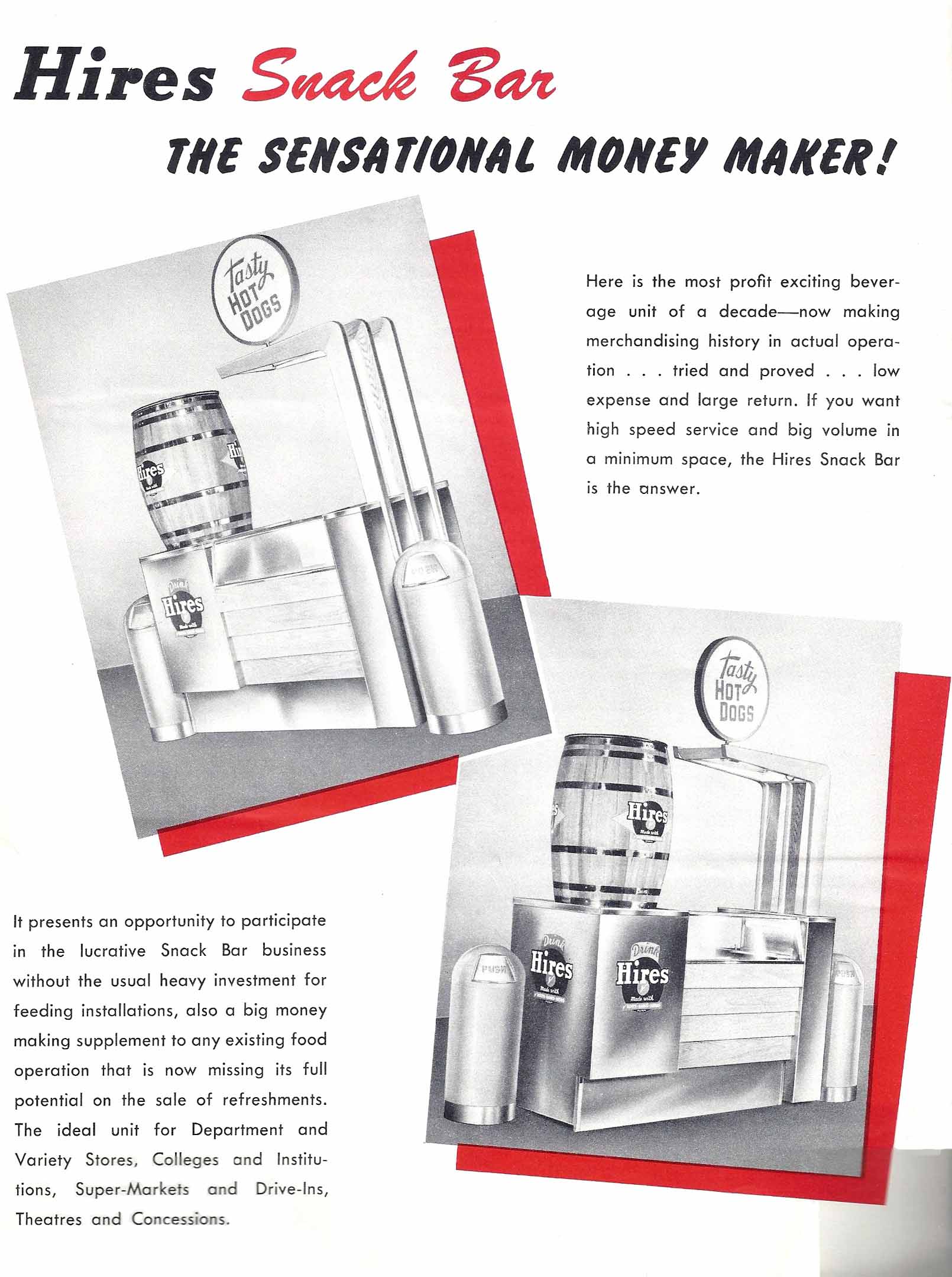
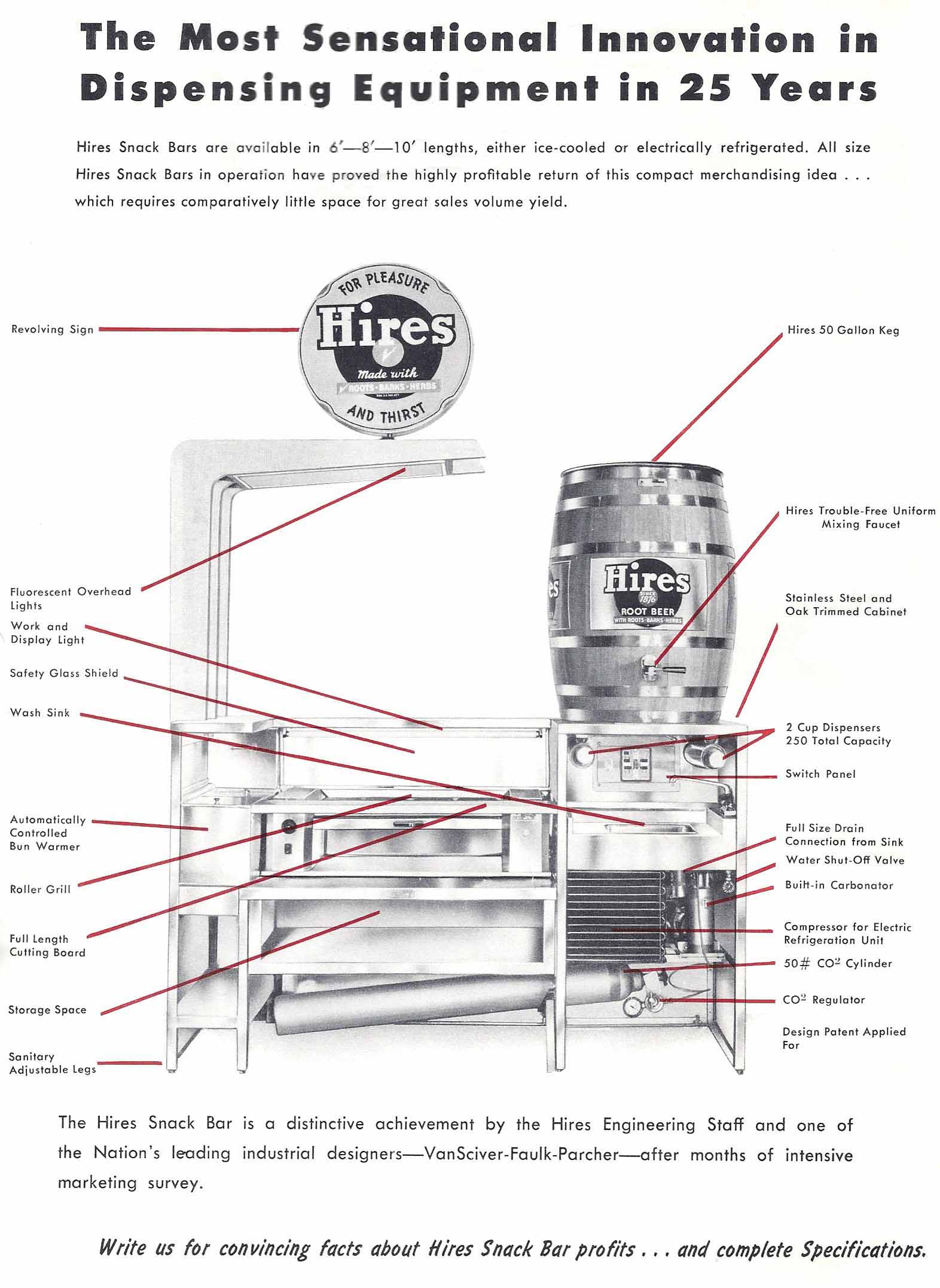
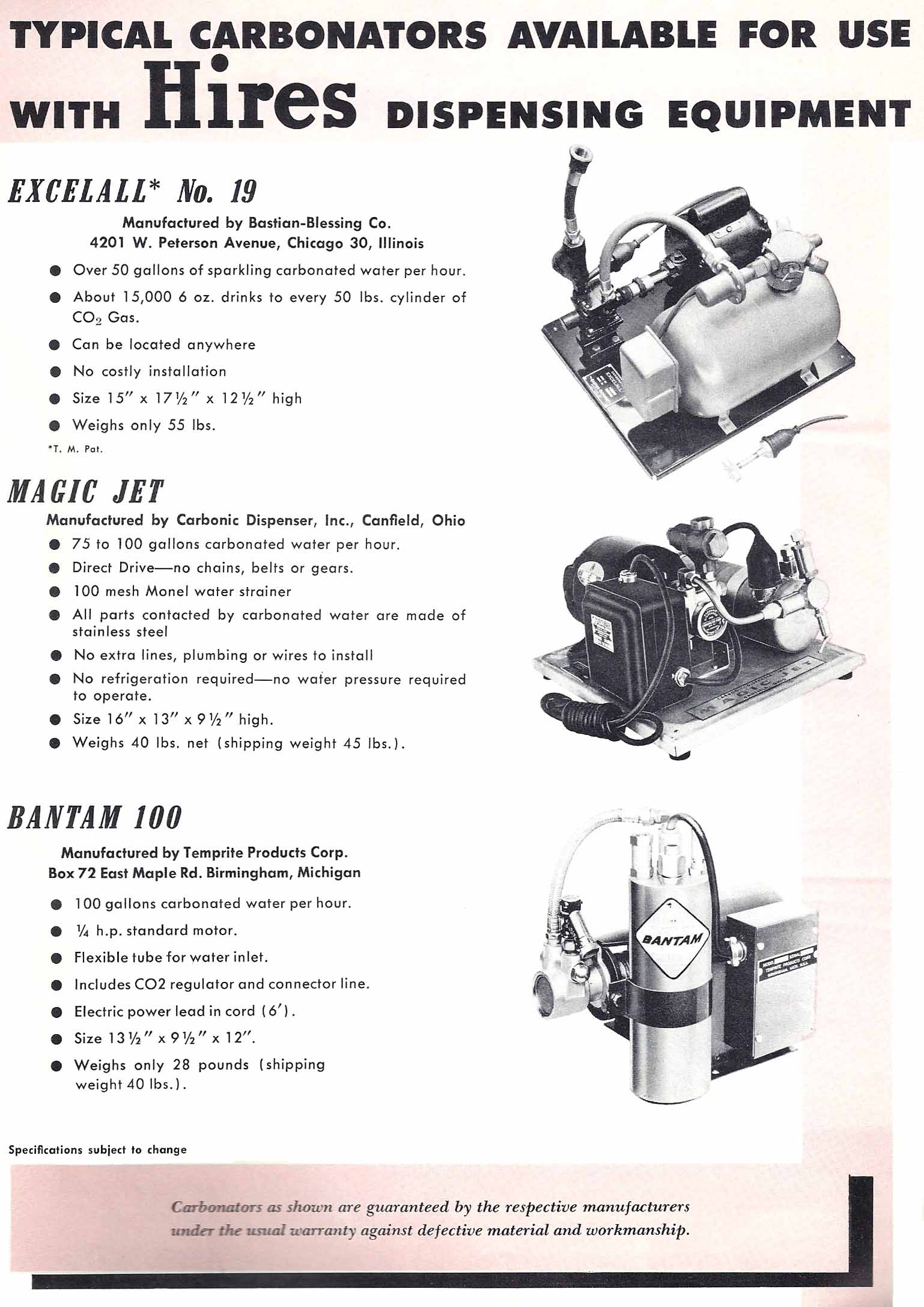
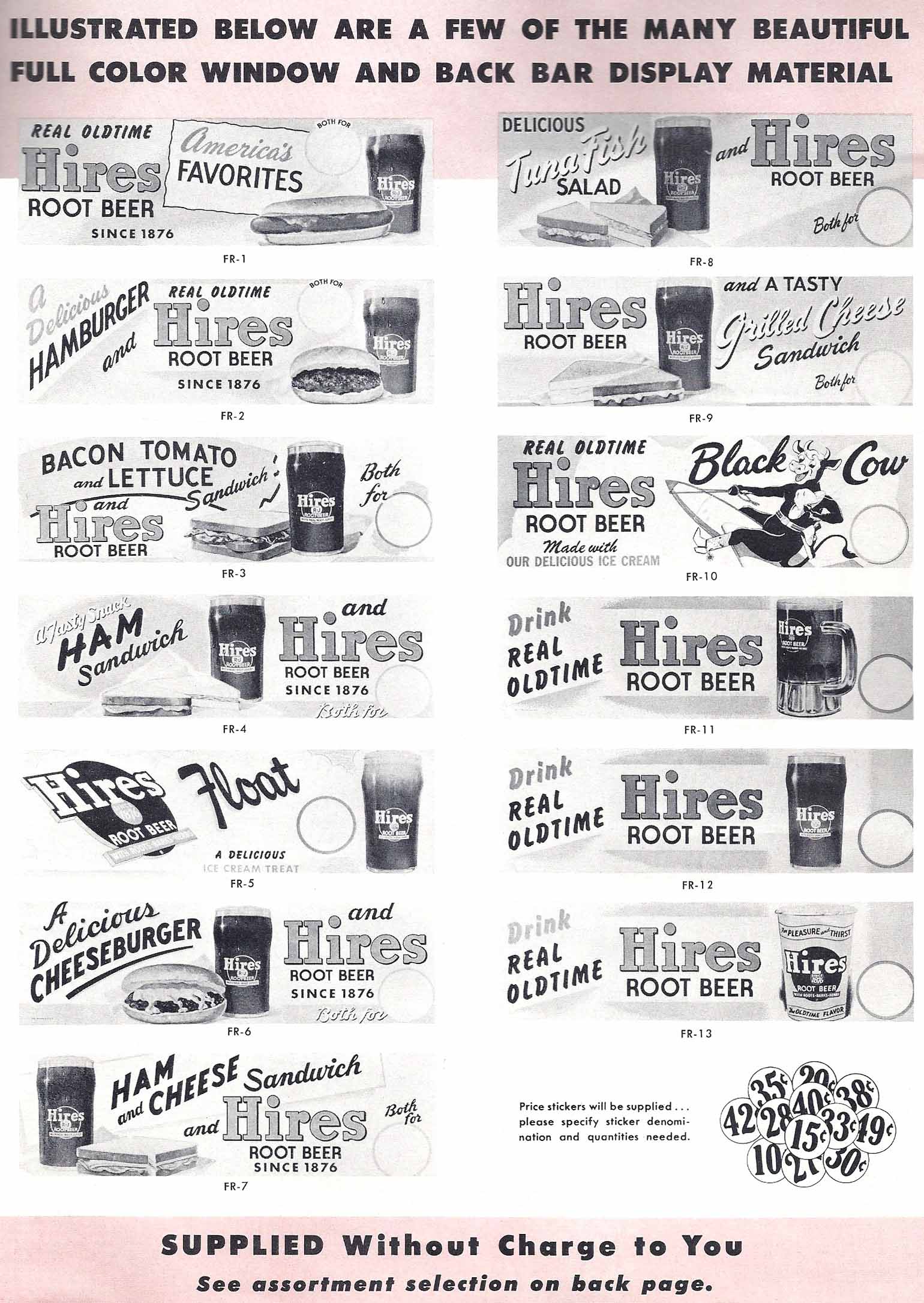
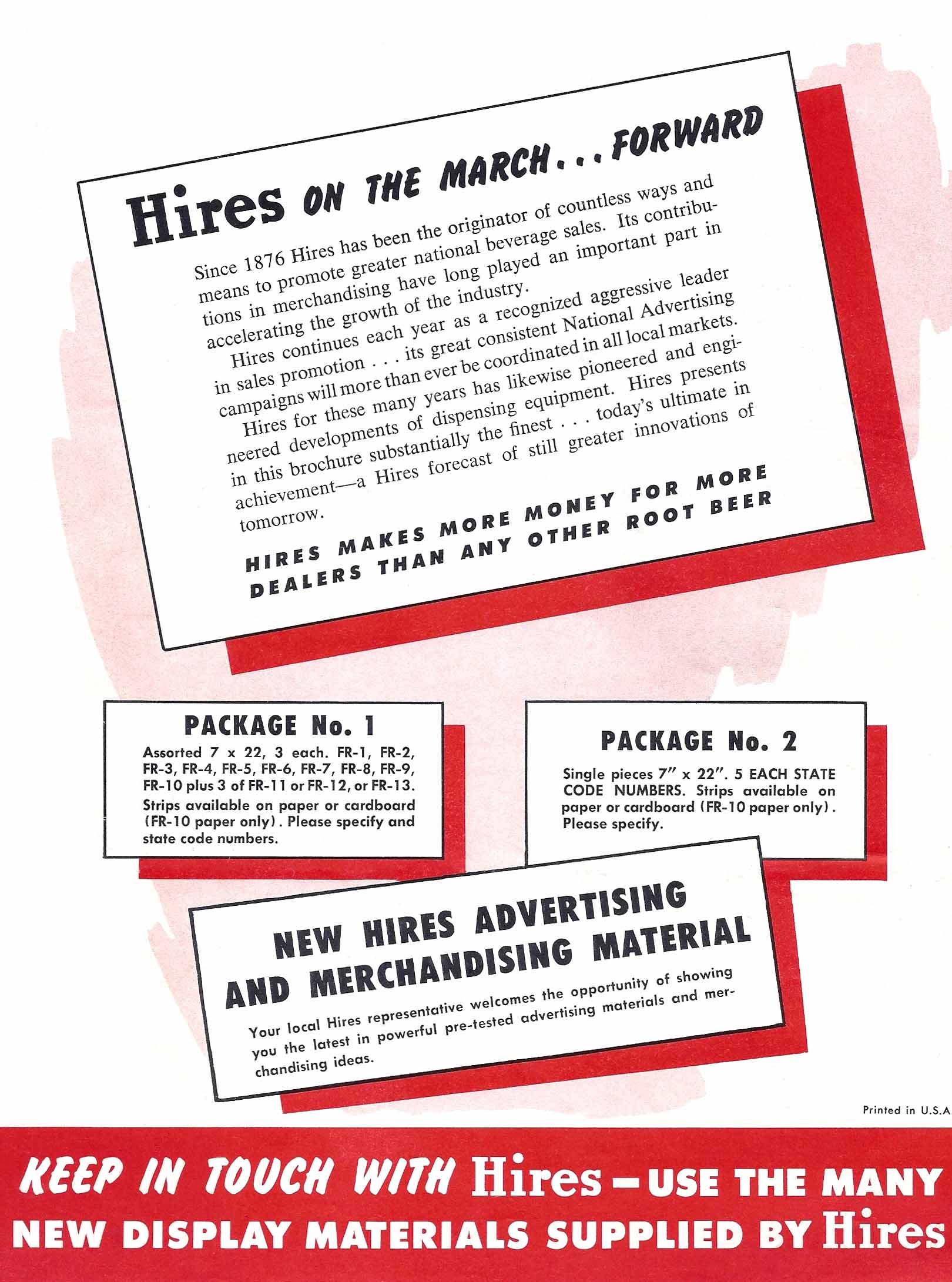
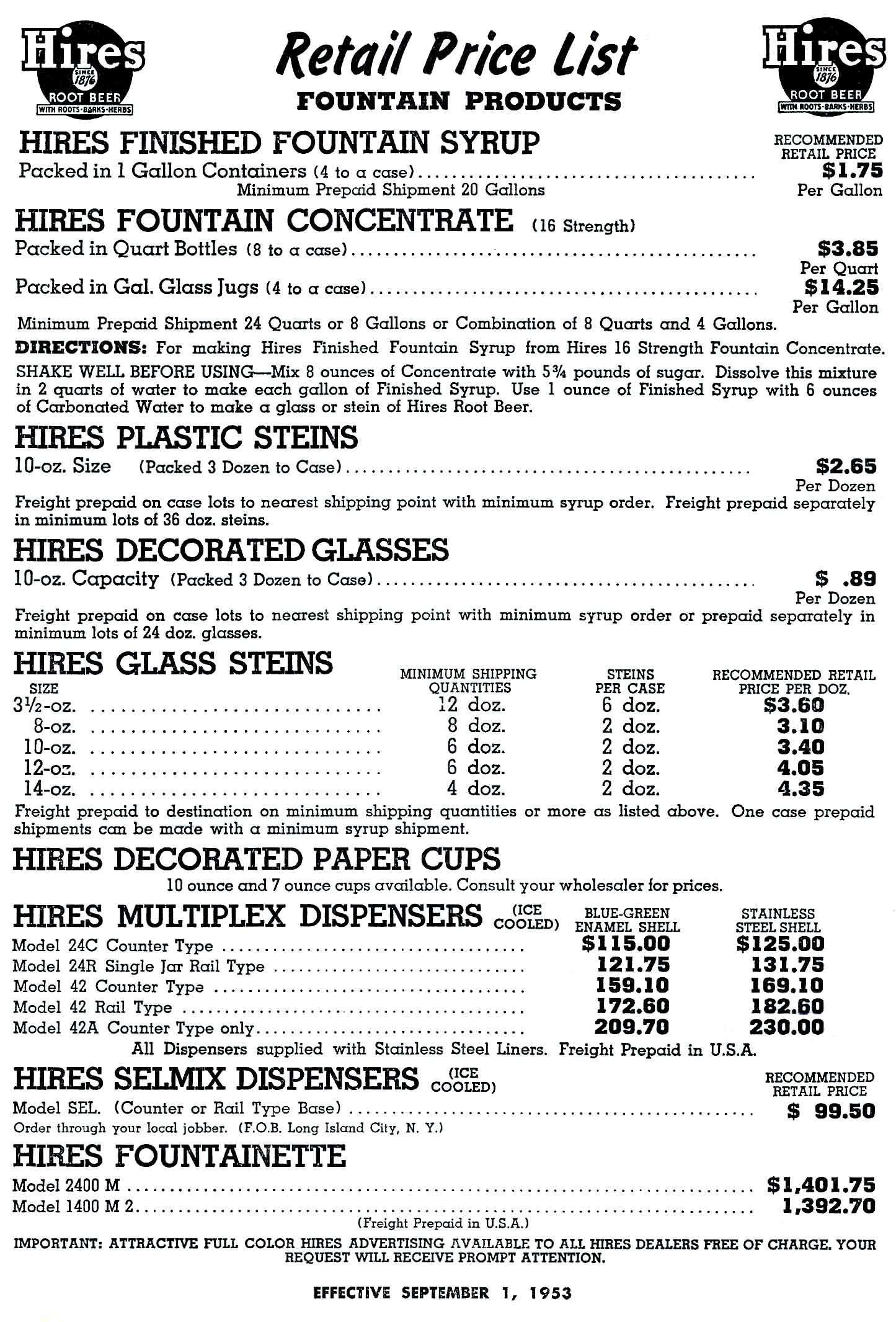
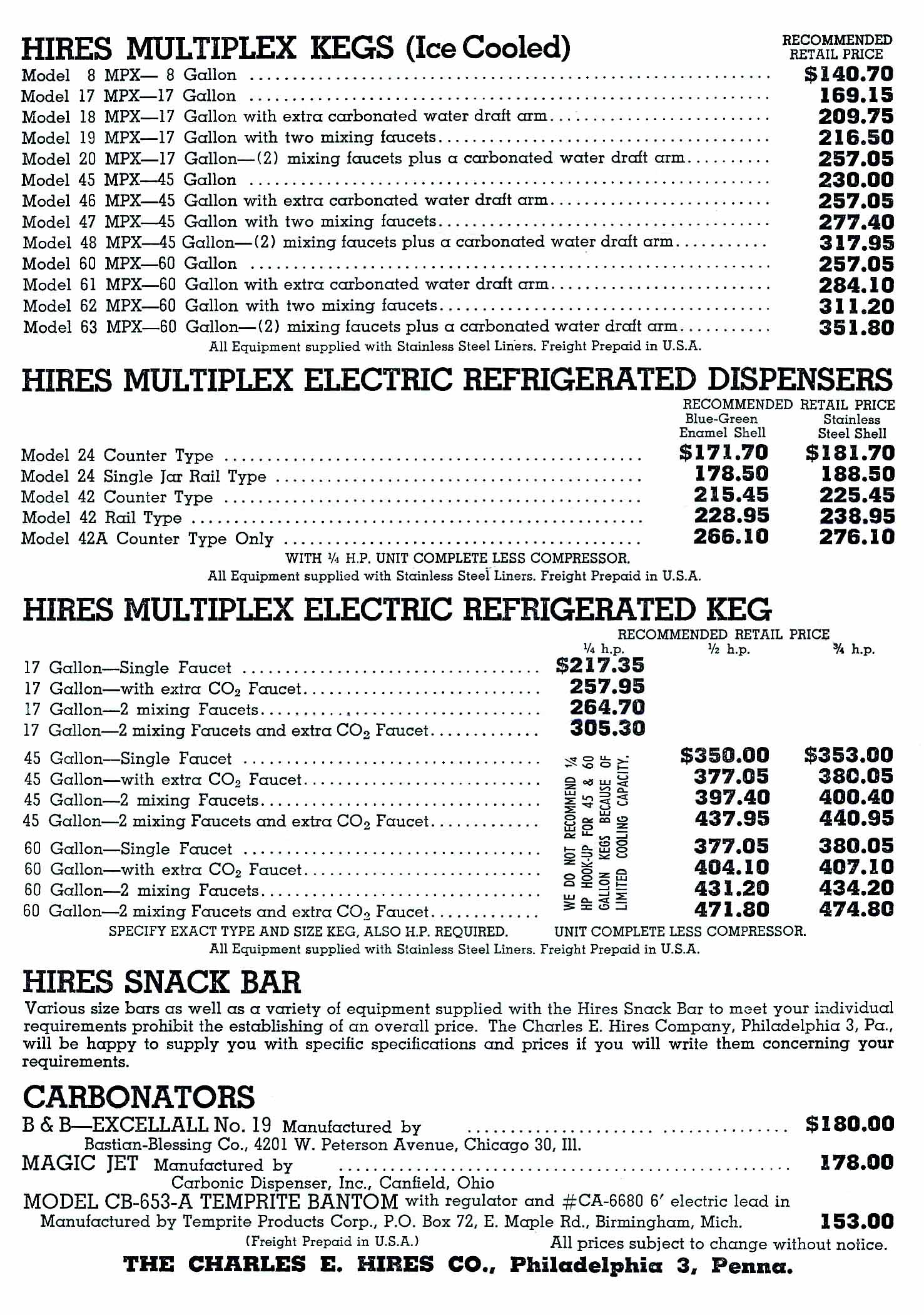
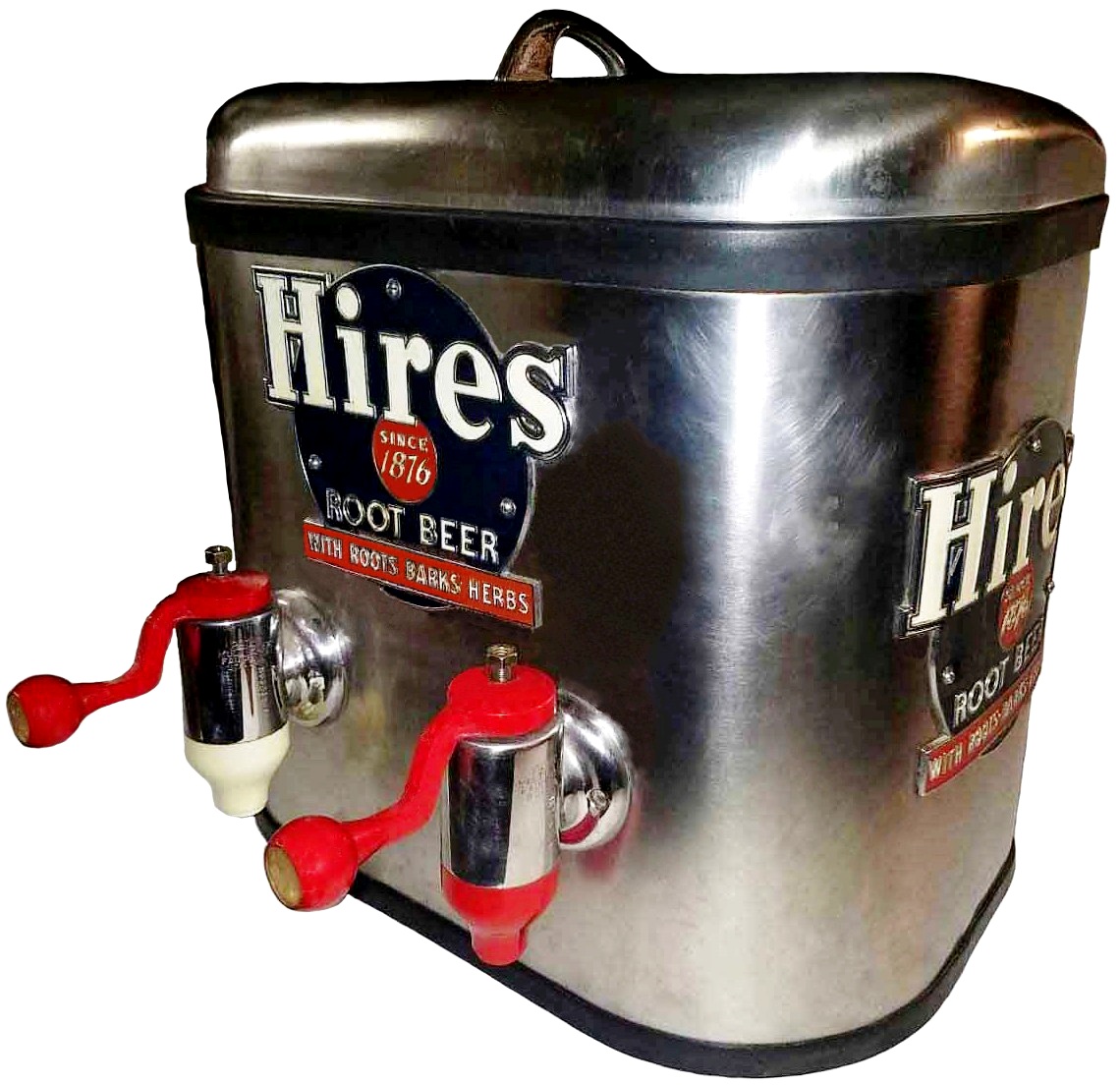


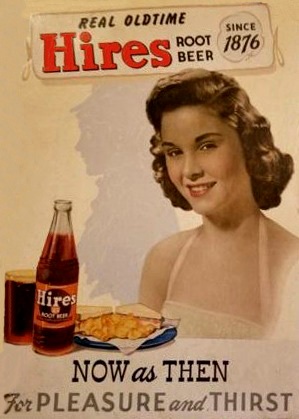
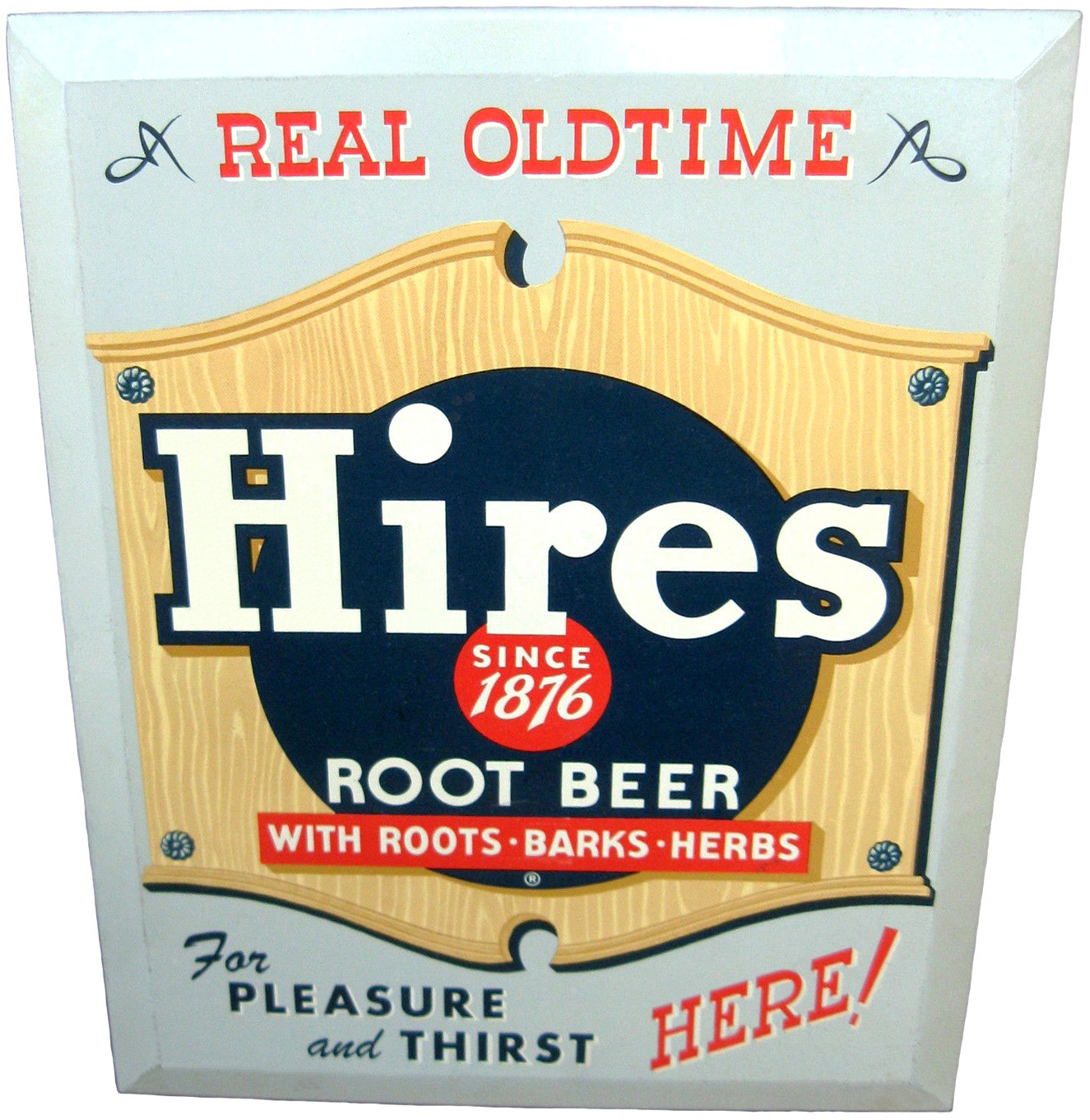
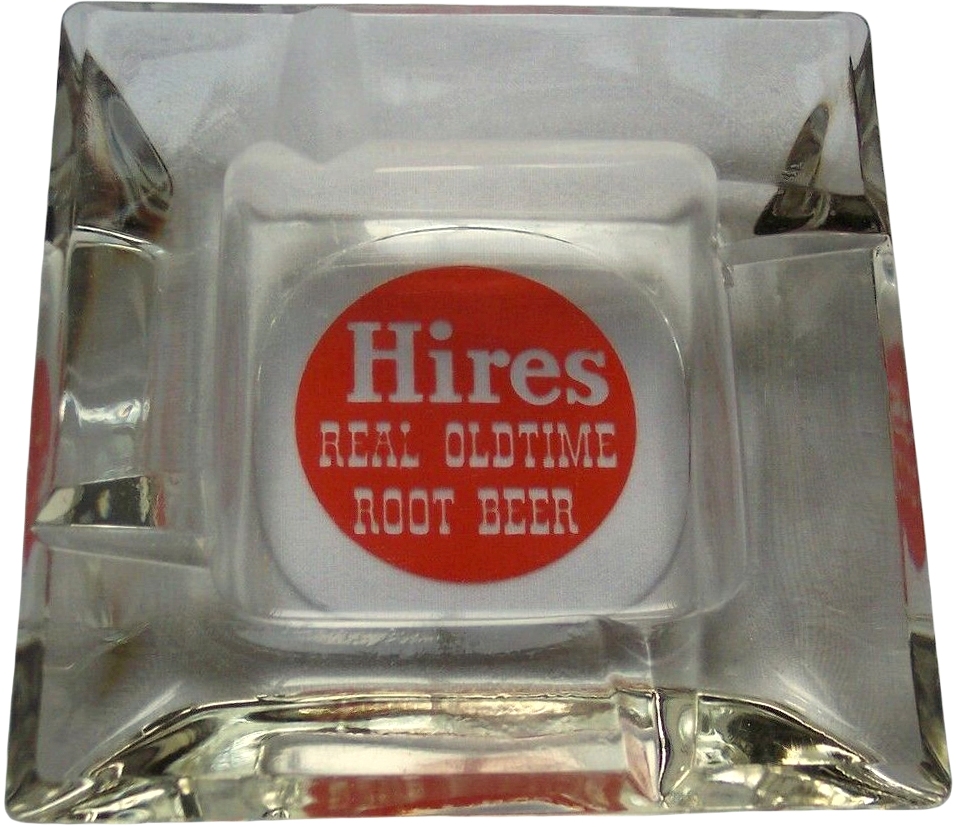
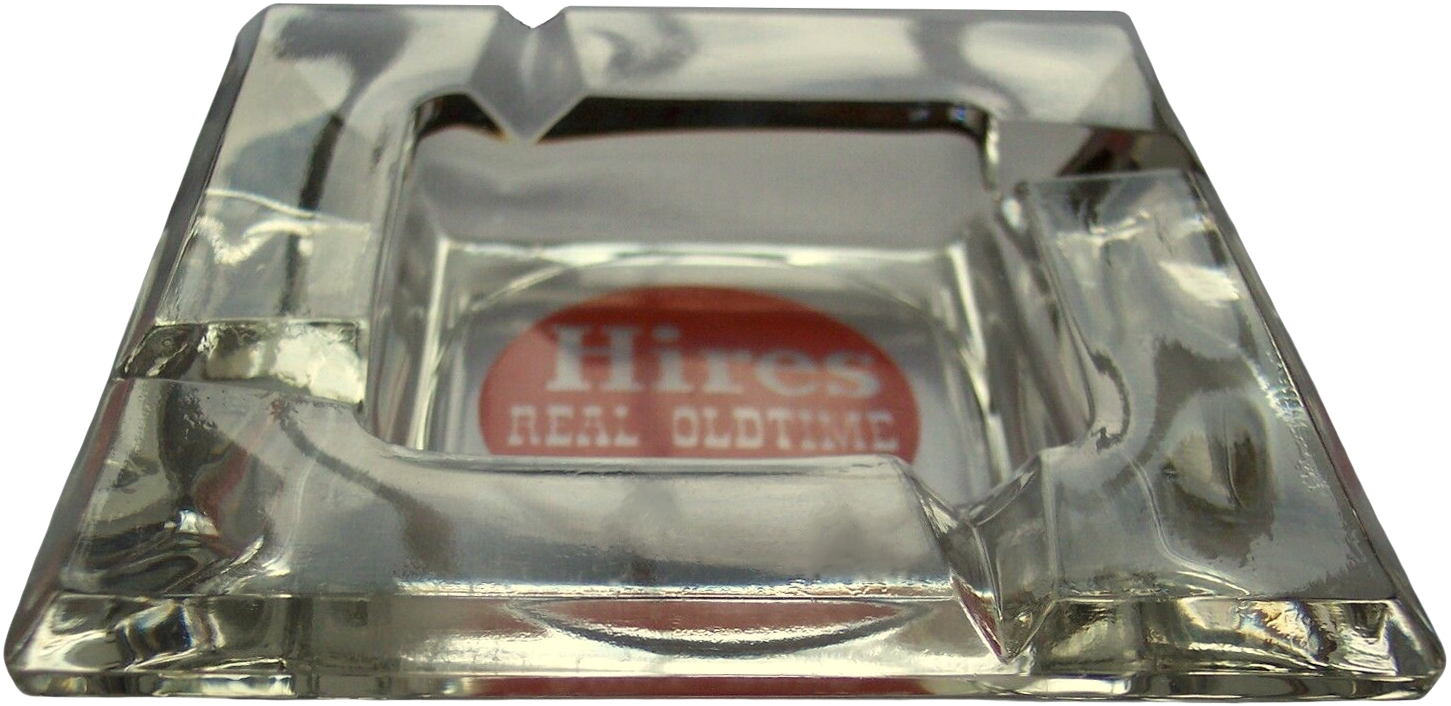
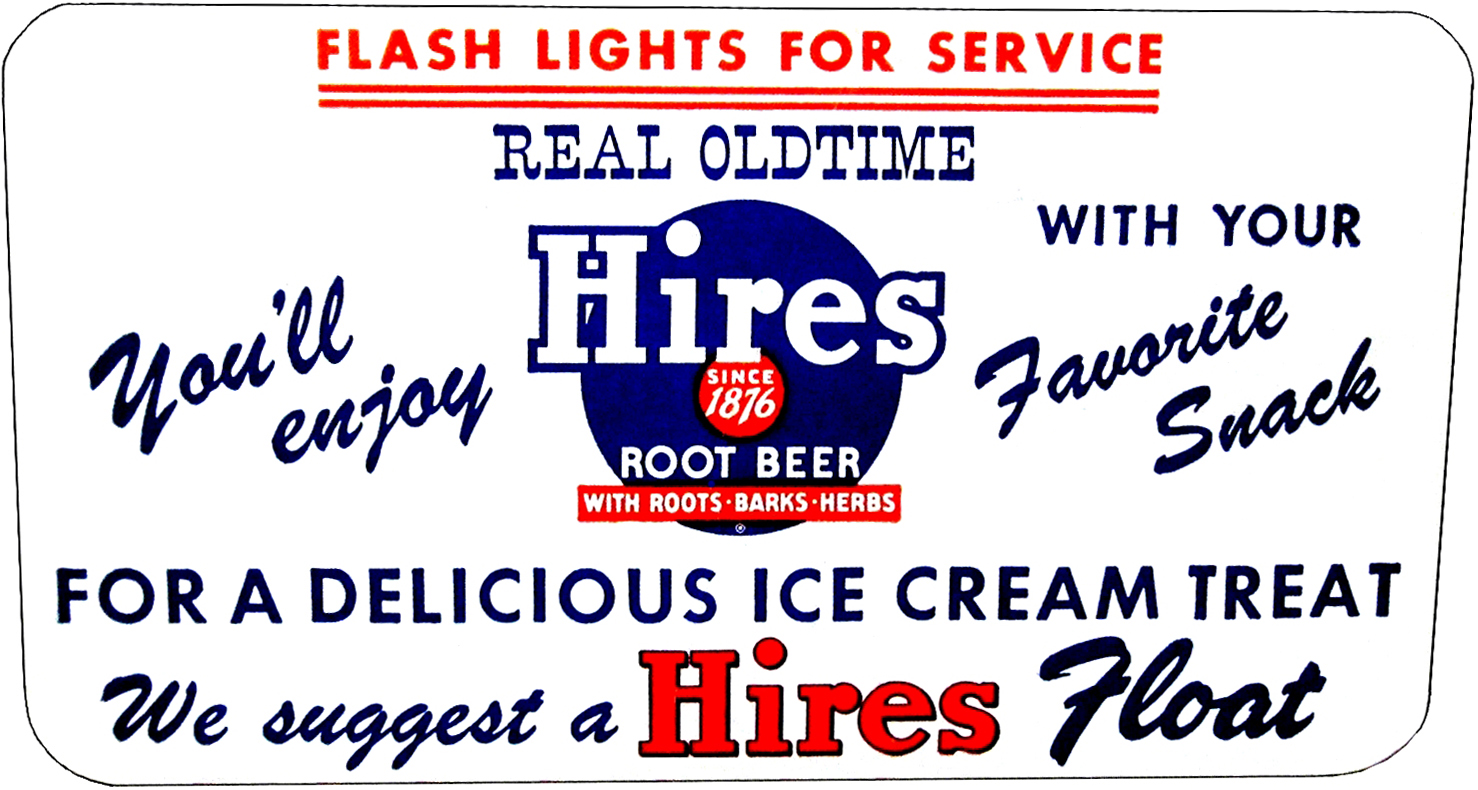
%20Root%20Beer%20Manners%20Big%20Boy%20Drive-In%20window%20card.jpg)


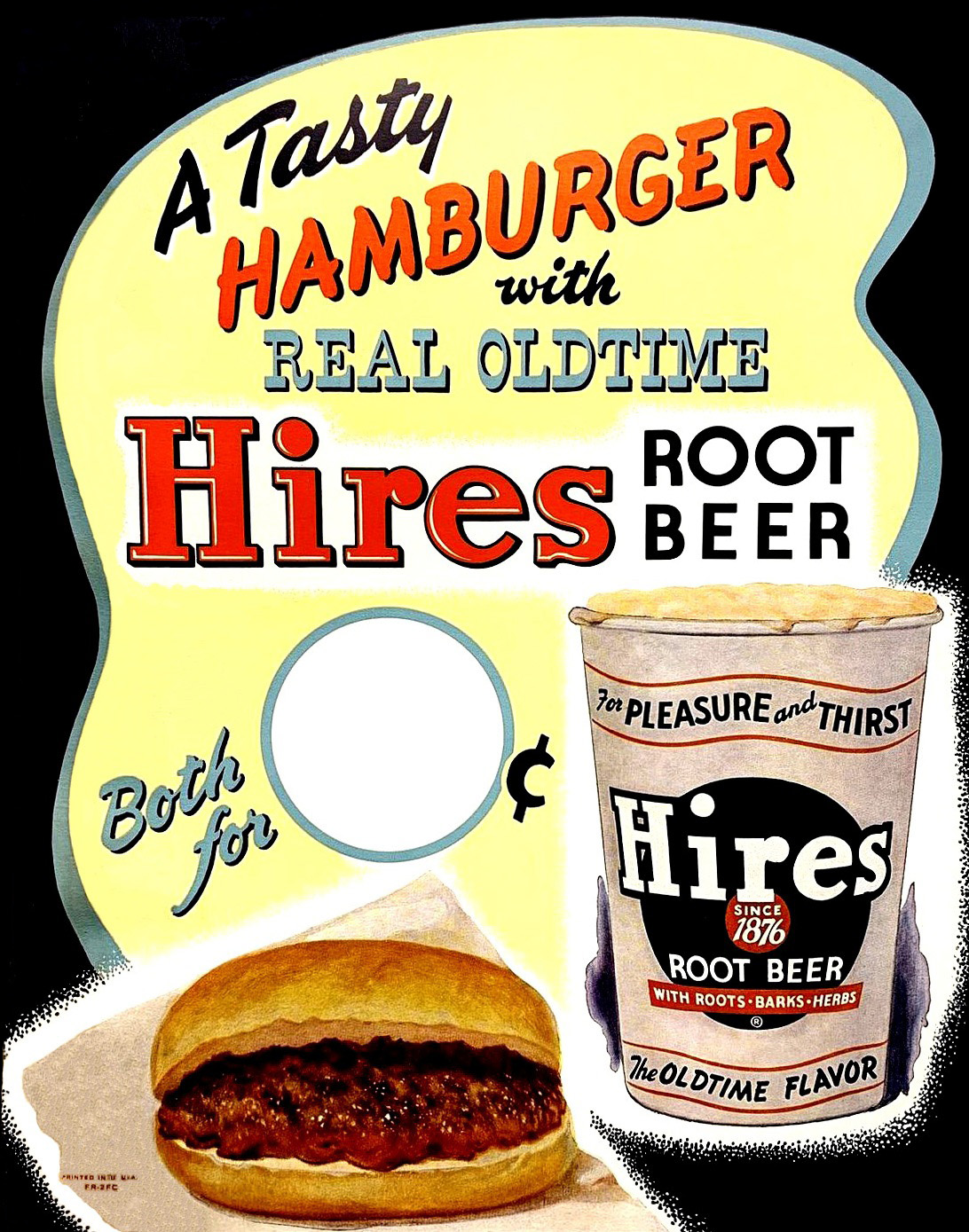


%20Root%20Beer%20Made%20with%20Roots-Barks-Herbs...Since%201876%20aluminum%20sign.jpg)
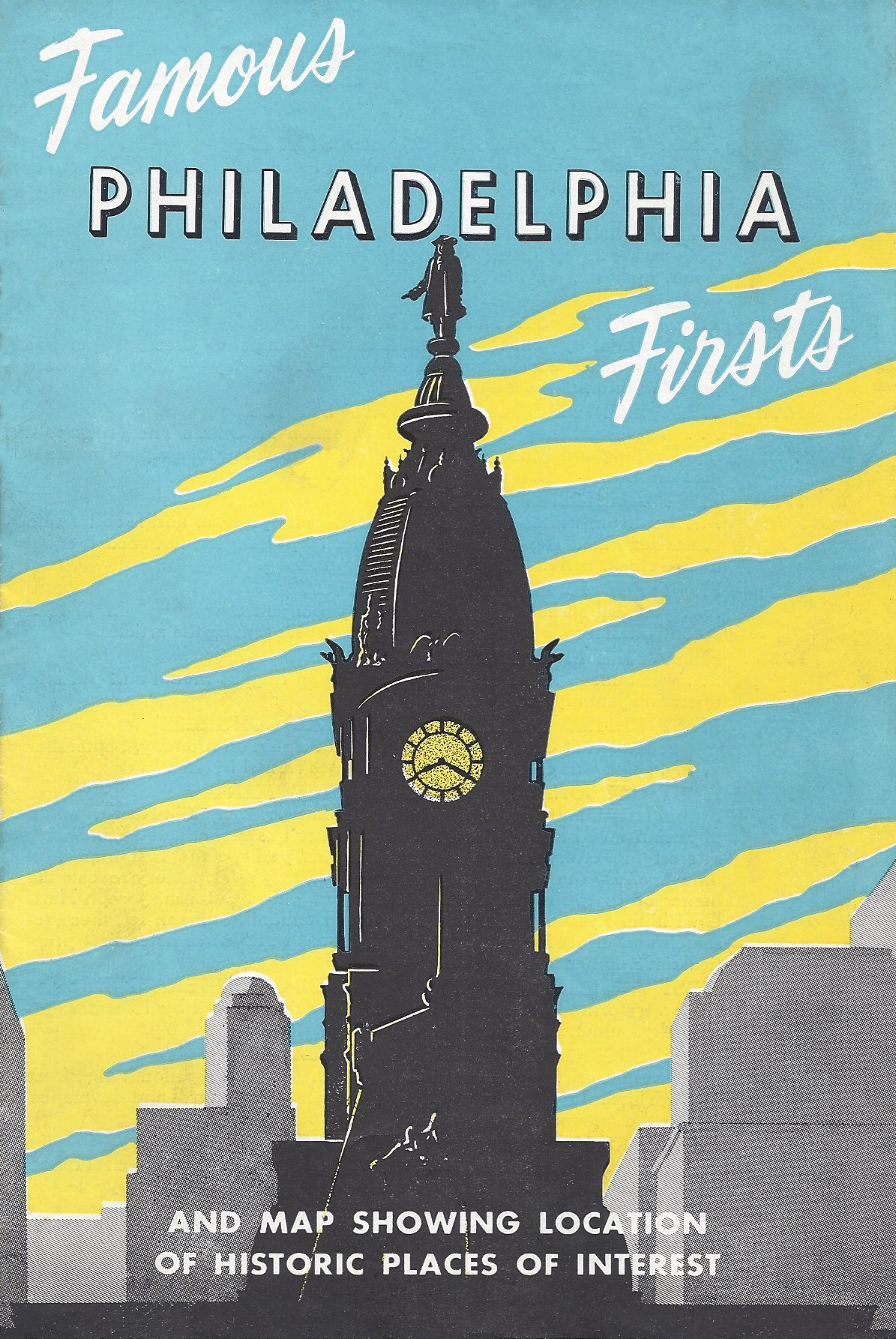

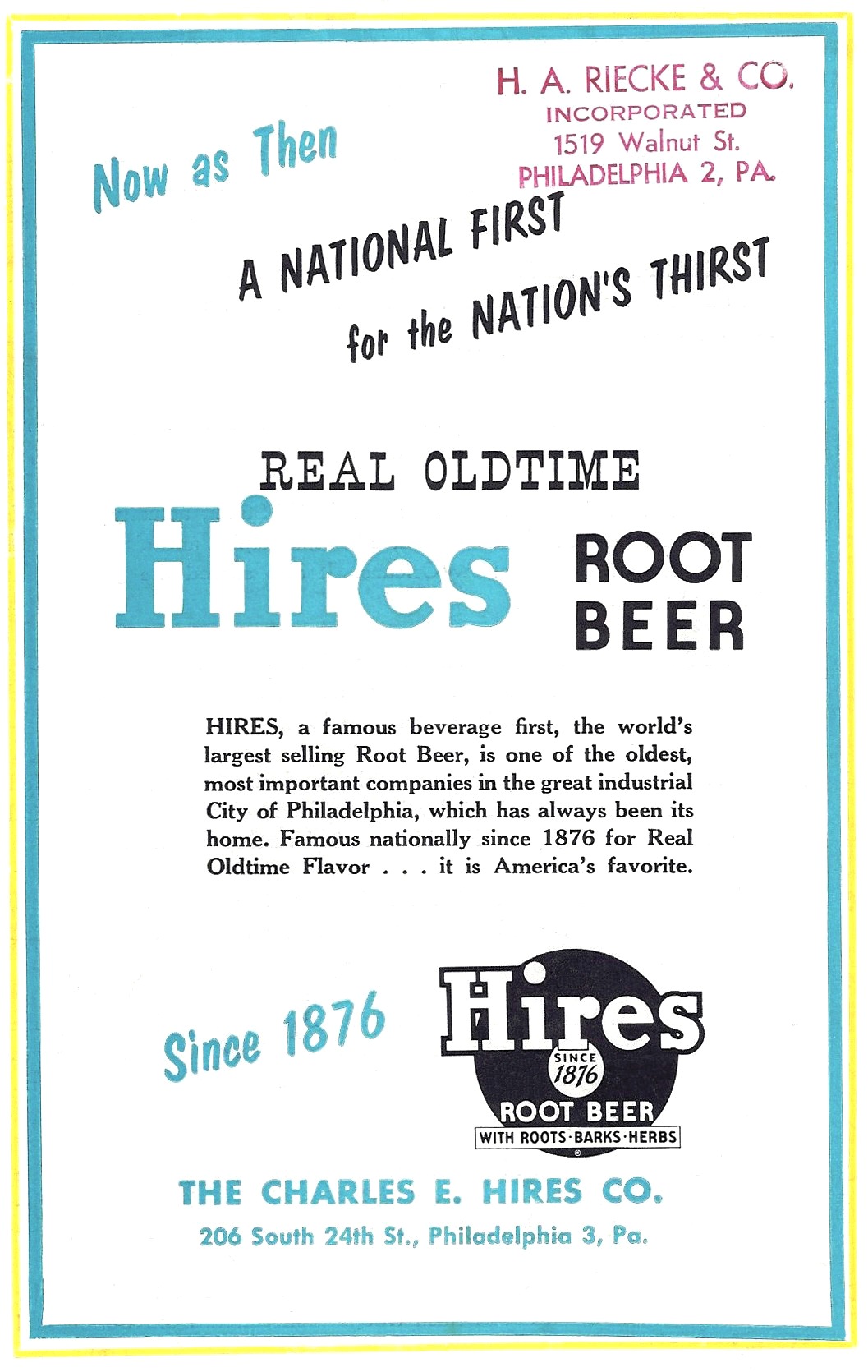

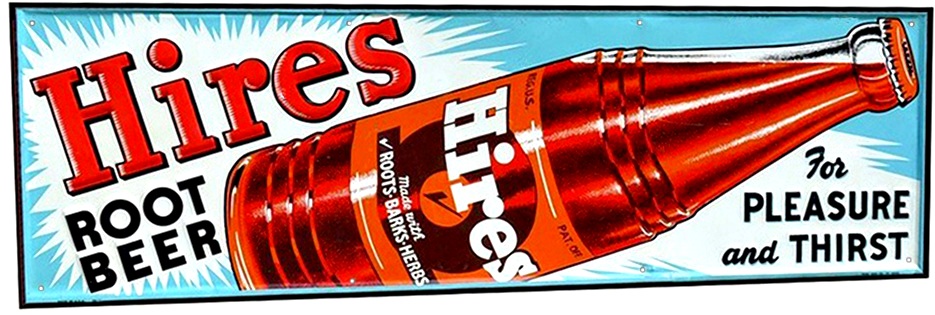
%20Root%20Beer%20With%20Roots-Barks-Herbs%20ACL%20-%20Press%20Sign%20Co.%20St.%20Louis%20BN-15%20-%2010%20feet%20tall%20tin%20sign%20-%20front.jpg)
%20Root%20Beer%20With%20Roots-Barks-Herbs%20ACL%20-%20Press%20Sign%20Co.%20St.%20Louis%20BN-15%20-%2010%20feet%20tall%20tin%20sign%20-%20back.jpg)

